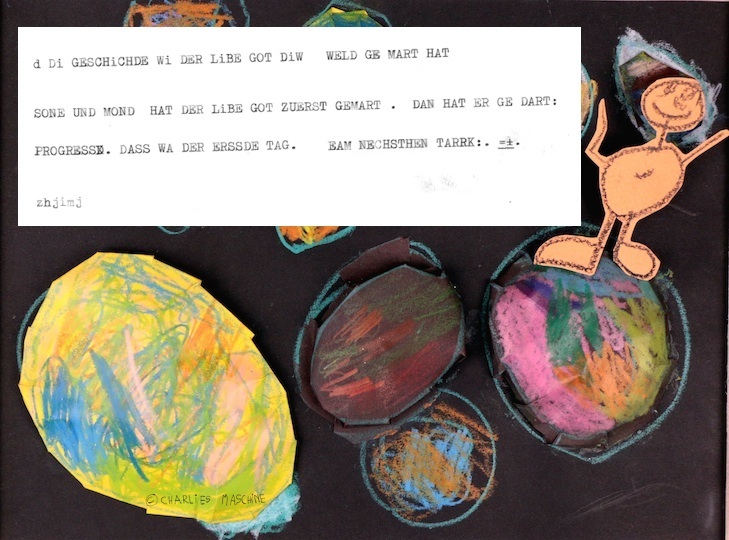Charlie wants to start something new - are you ready for assembly?


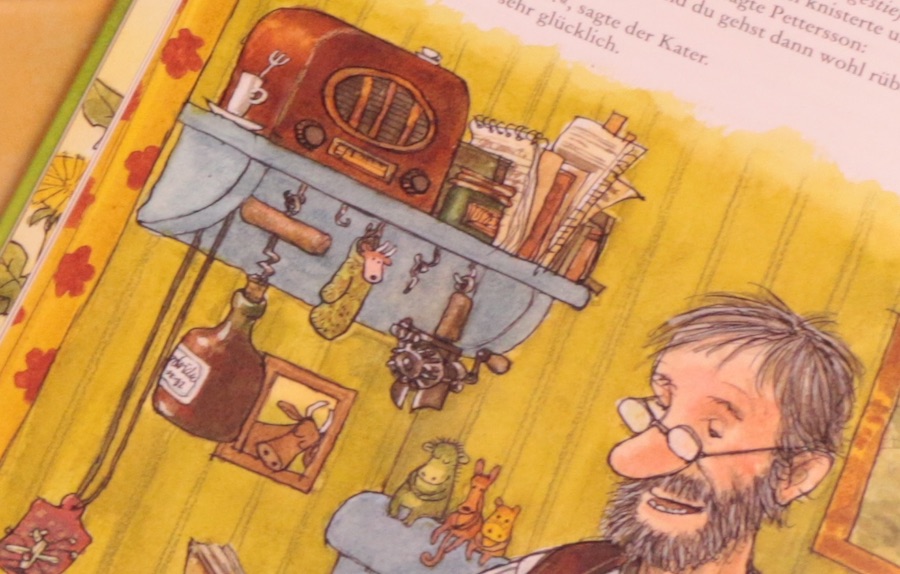
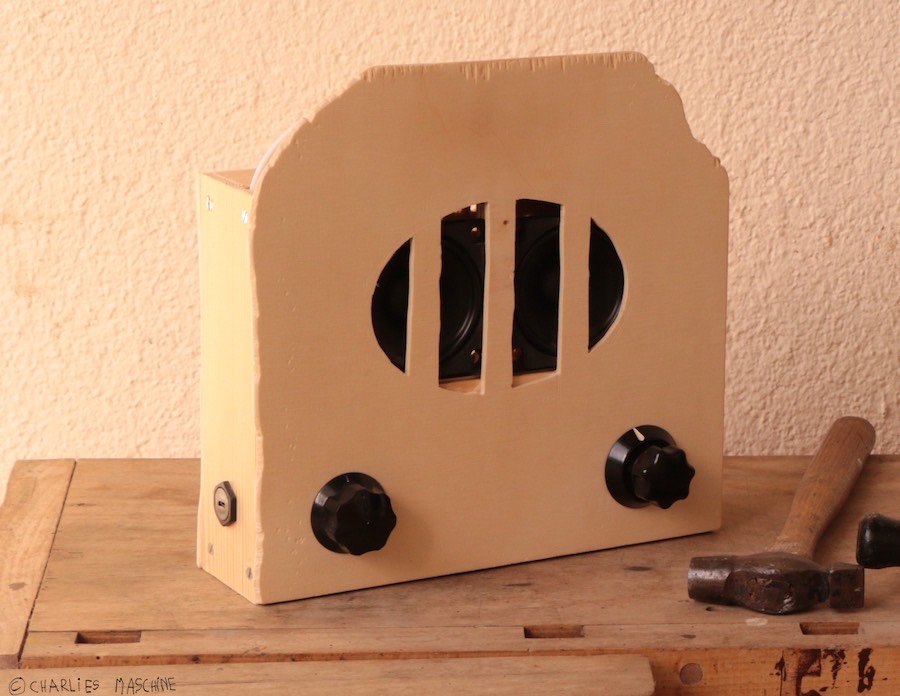
Work in progress: Fretsaw, plywood, picture frame, fabric and knobs. What is this going to be?
You'll find marvelously crazy ideas for inventions in Sven Nordqvist's stories about Petterson and Findus.

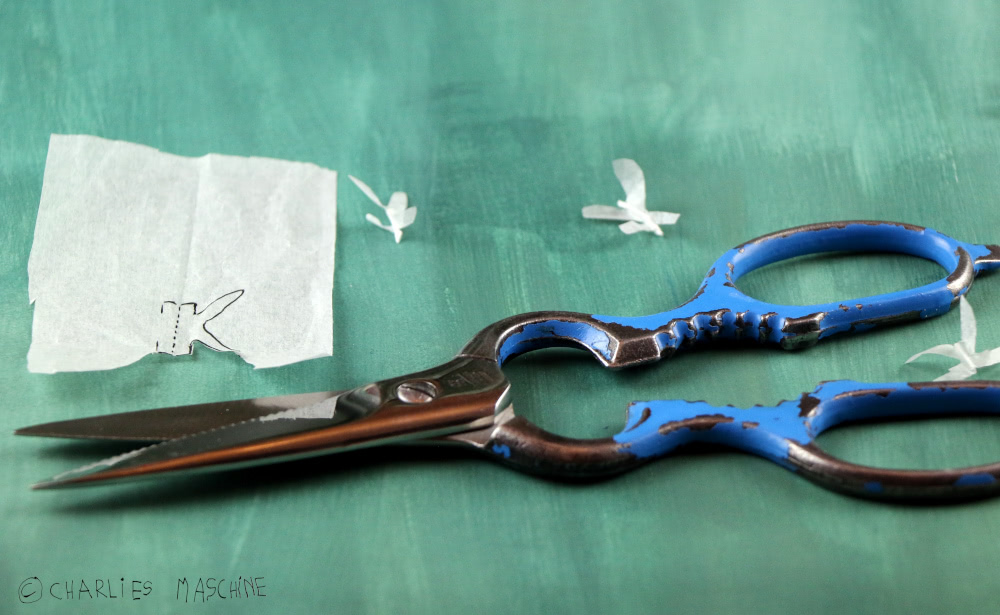
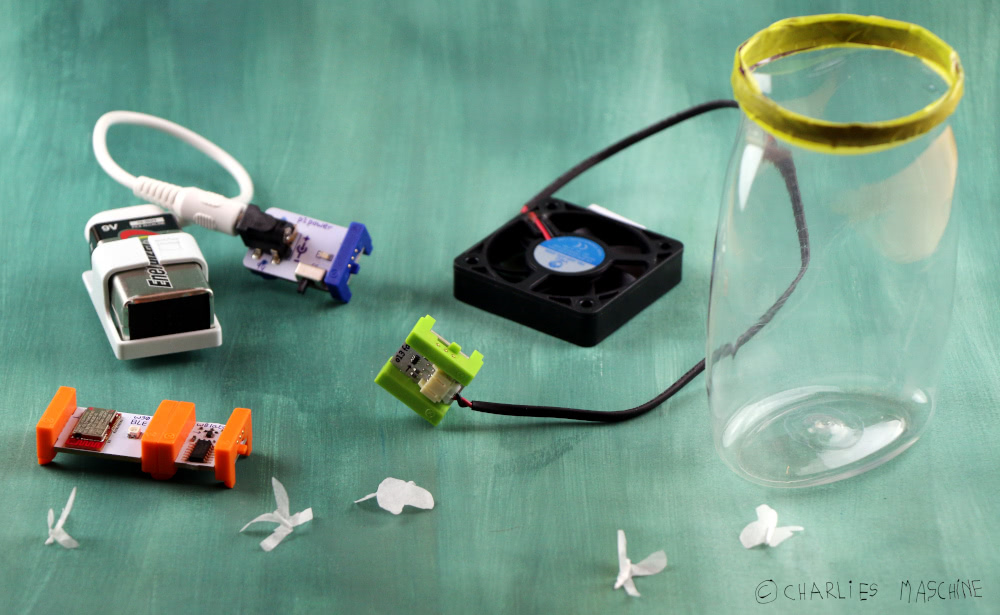
Insects are super-interesting to watch. Charlie is currently building an insectarium – batterie powered. Here is his experiment with parchement moths and littleBits. The two parts you’ll need are the battery-Bit and the fan-Bit. With additional orange Bits, the moth jar can be remote controlled using an app for mobile phone.

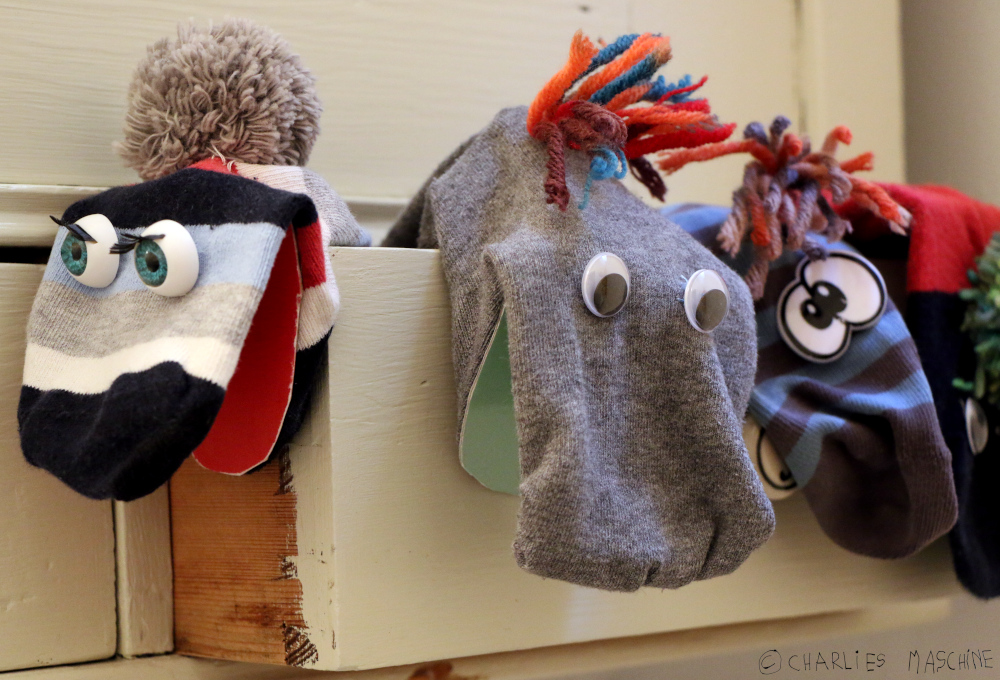
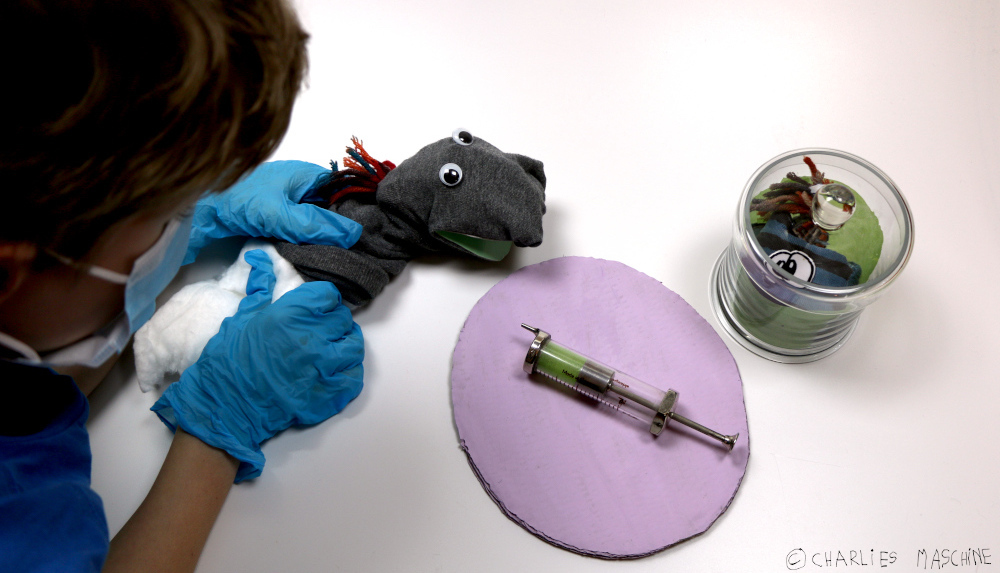
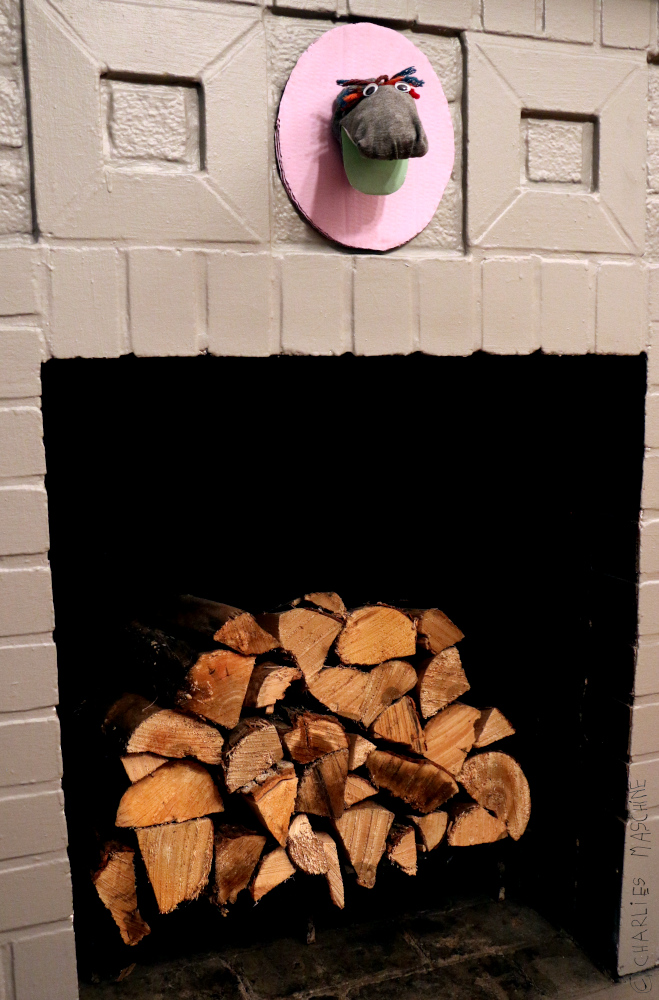
Why hide your sock monsters in a drawer - how about mounting them to the wall?

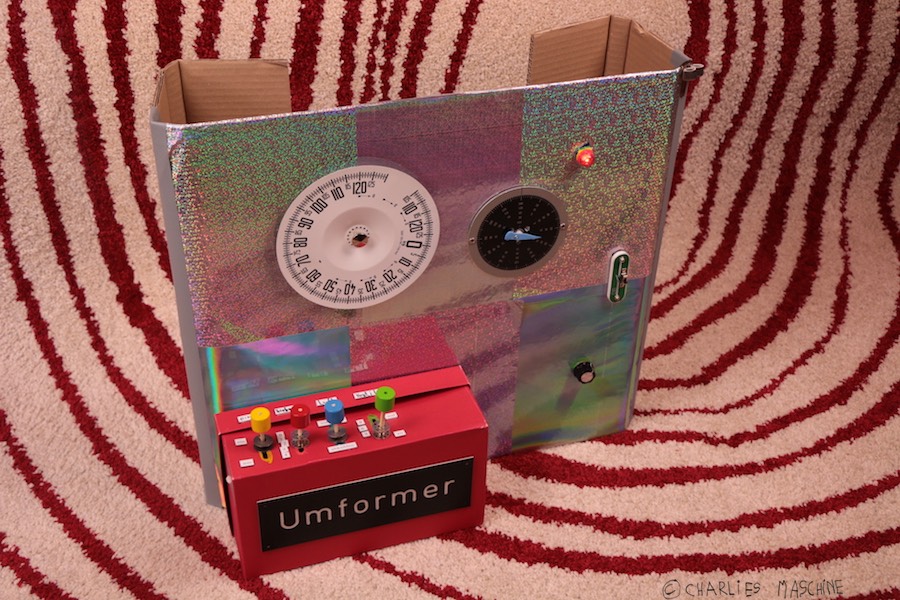

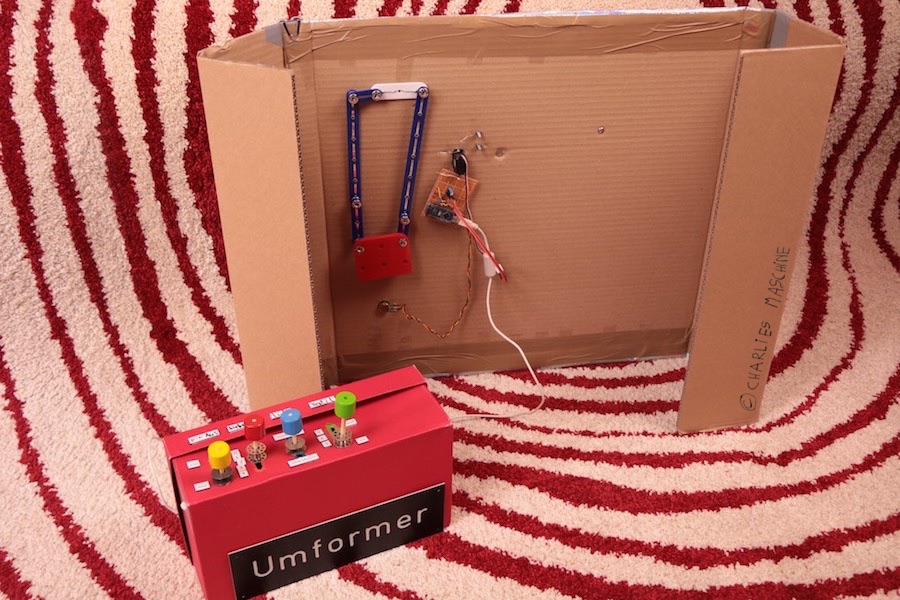
In future this time machine has already taken us to meet the most wondrous people in incredible places. Be safe and see you yesterday, today, or tomorrow!

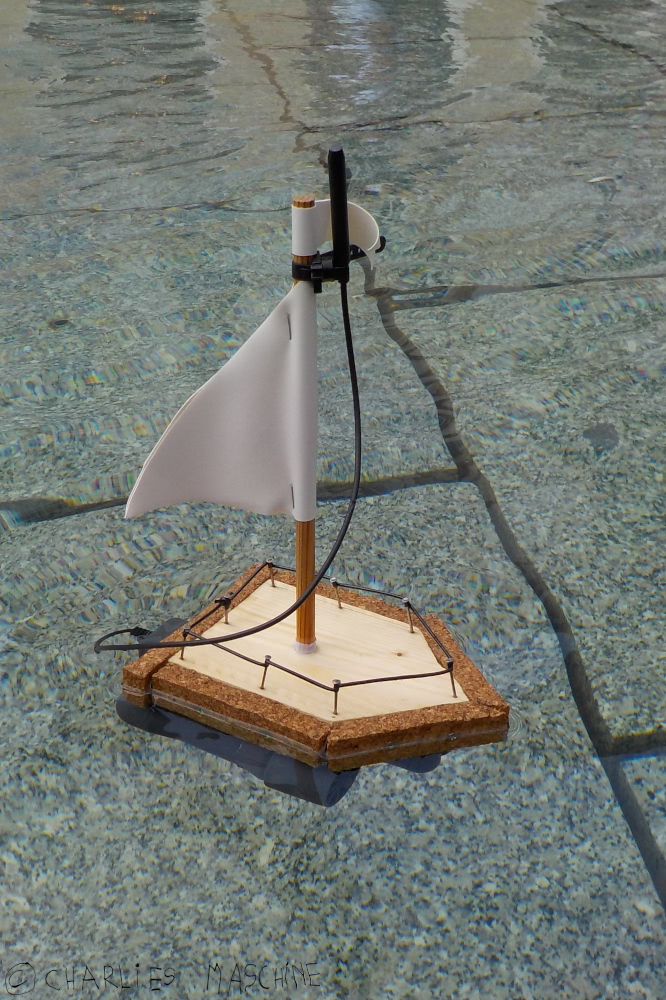
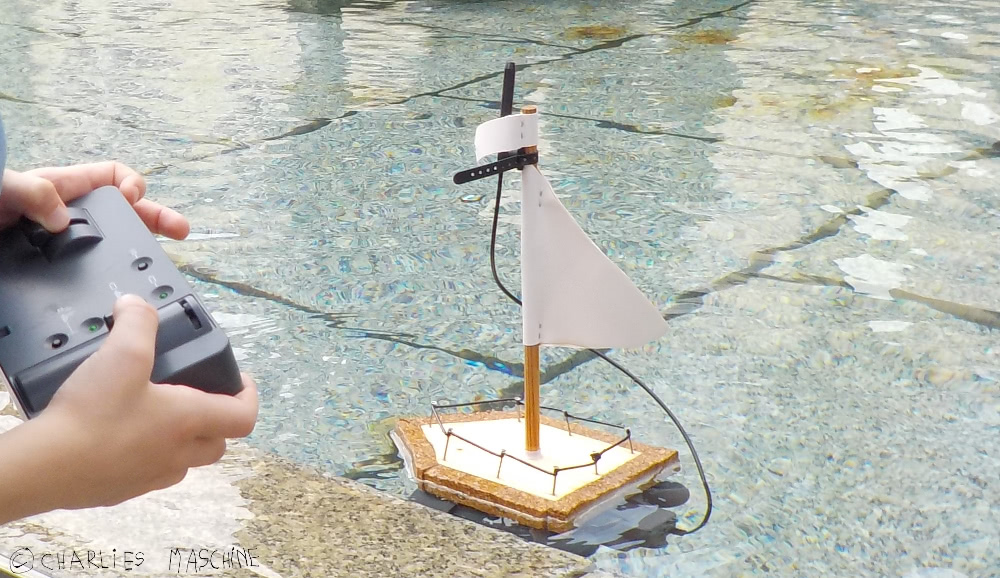
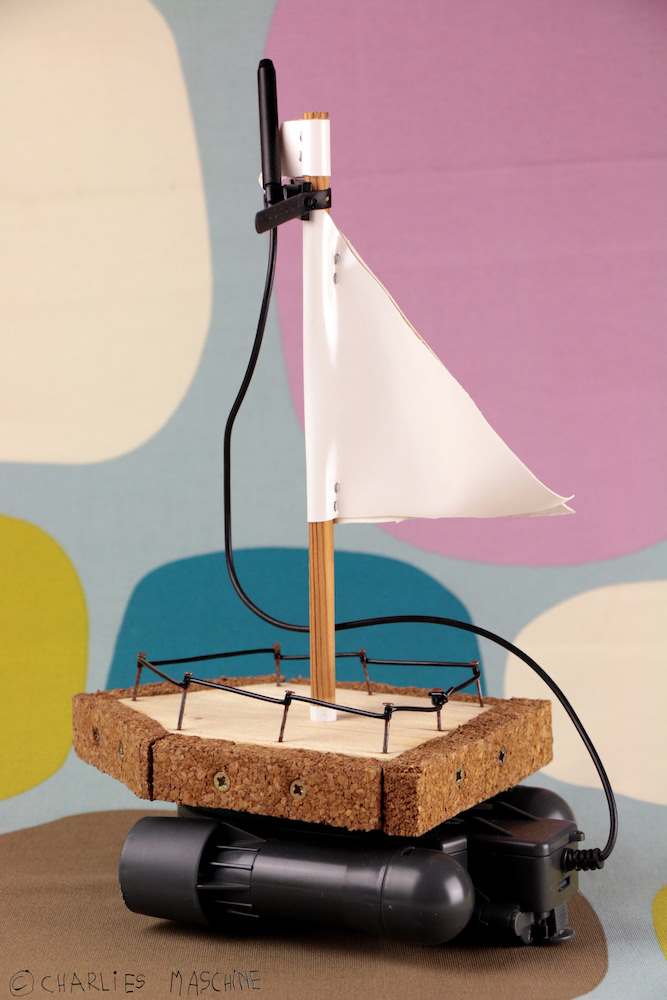
Saw, nail, screw, drill a hole. Hoist the mast, staple a sail to it, the boat is built! It has a Playmobil remote control. Fixing that to the boat is tricky: Charlie found two little button head screws on which you can slide the slit of the motor part. Now the boat is seaworthy.

Hey there, human, fancy me?
I am 137801, Charlie’s coolest robot. I have an optical theremin nose and
OF COURSE! my indicators work, what were you thinking?
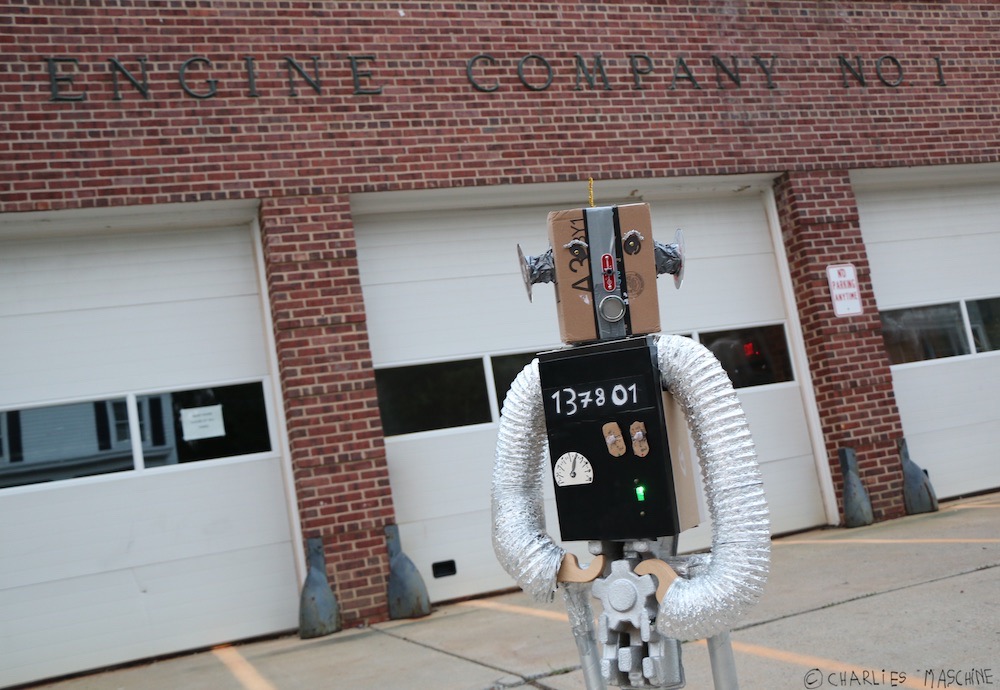

137801 is made from cardboard, mainly. Be careful, the silver paint marks off when you cuddle him. When you approach the robot, he’ll make a “huuuiiii”-sound. His optical theremin nose is a Snap Circuits component connected to a loudspeaker in his mouth. Snap Circuit kits include coloured LEDs and different switches and also various audio-components. The electric circuits are connected by snaps, and kind of unflexible, however, it works quite well to simply press the snaps into corrugated cardboard. The indicator and the light are connected to the control knobs by littleBits.
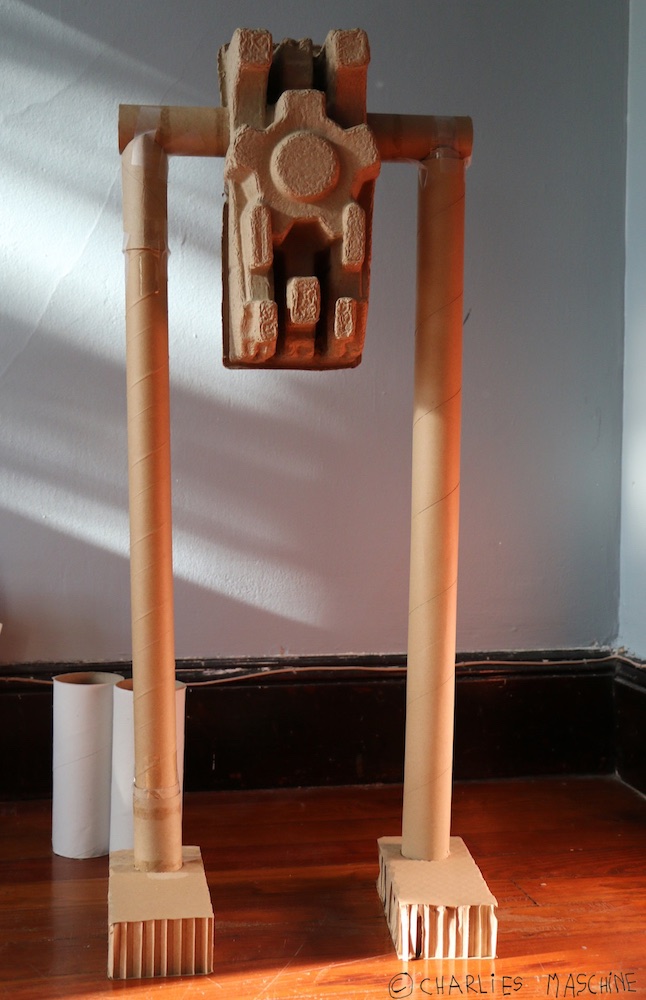
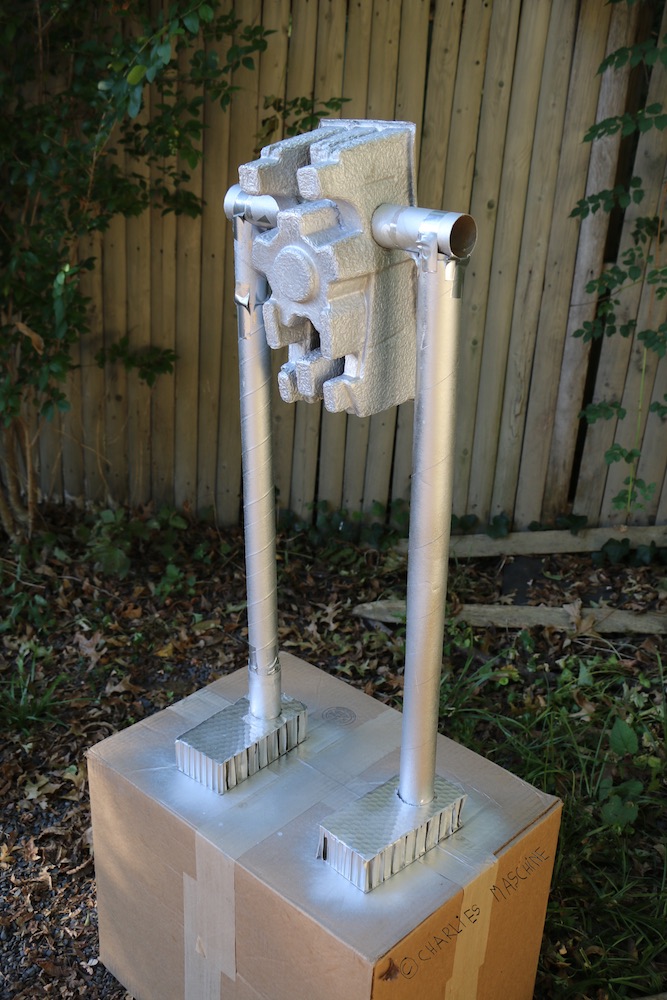


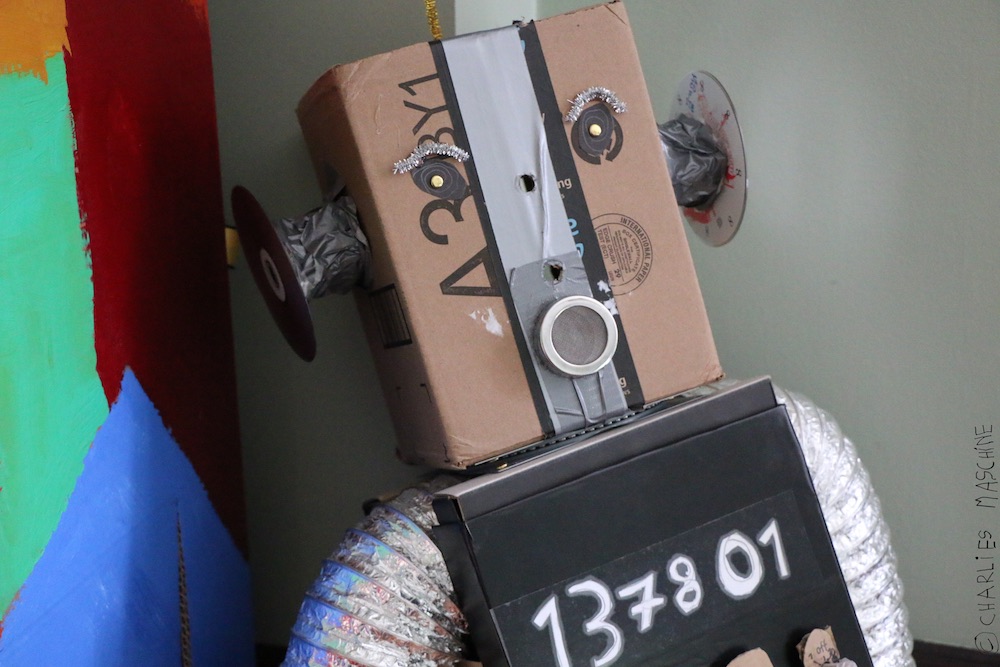
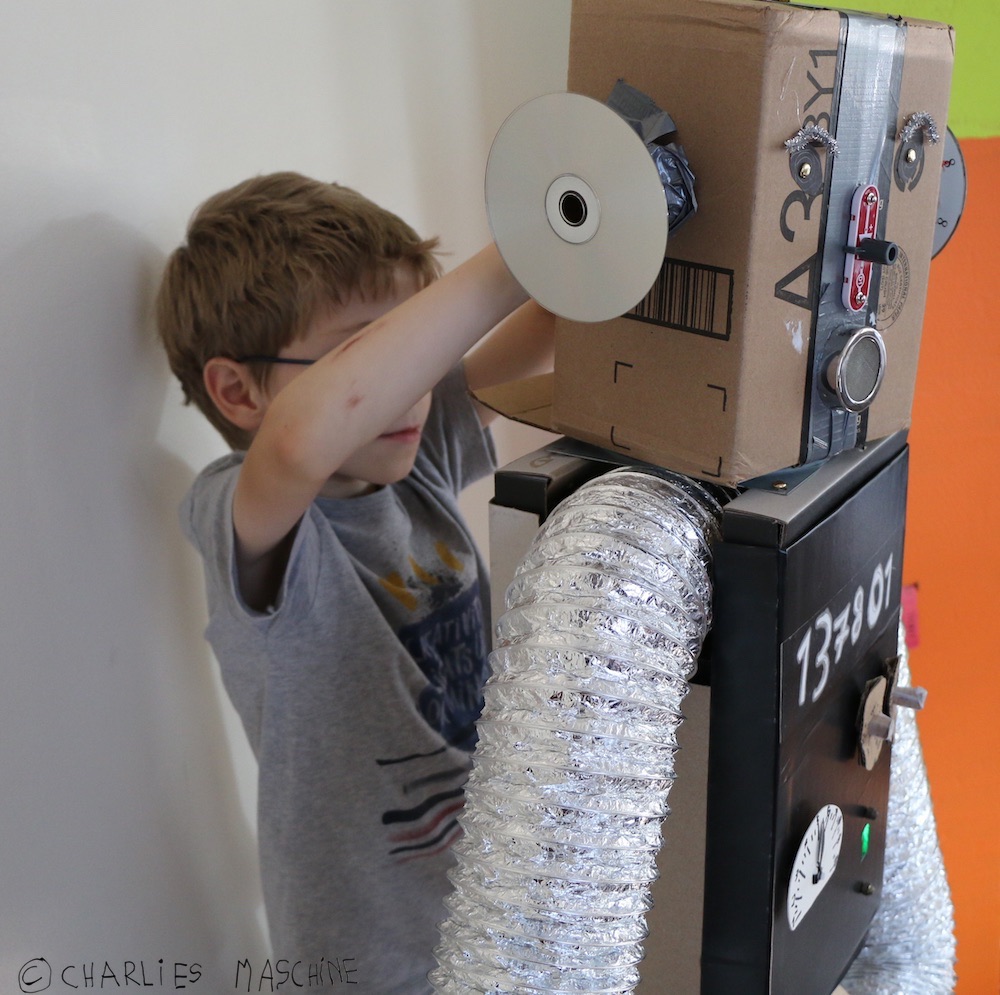

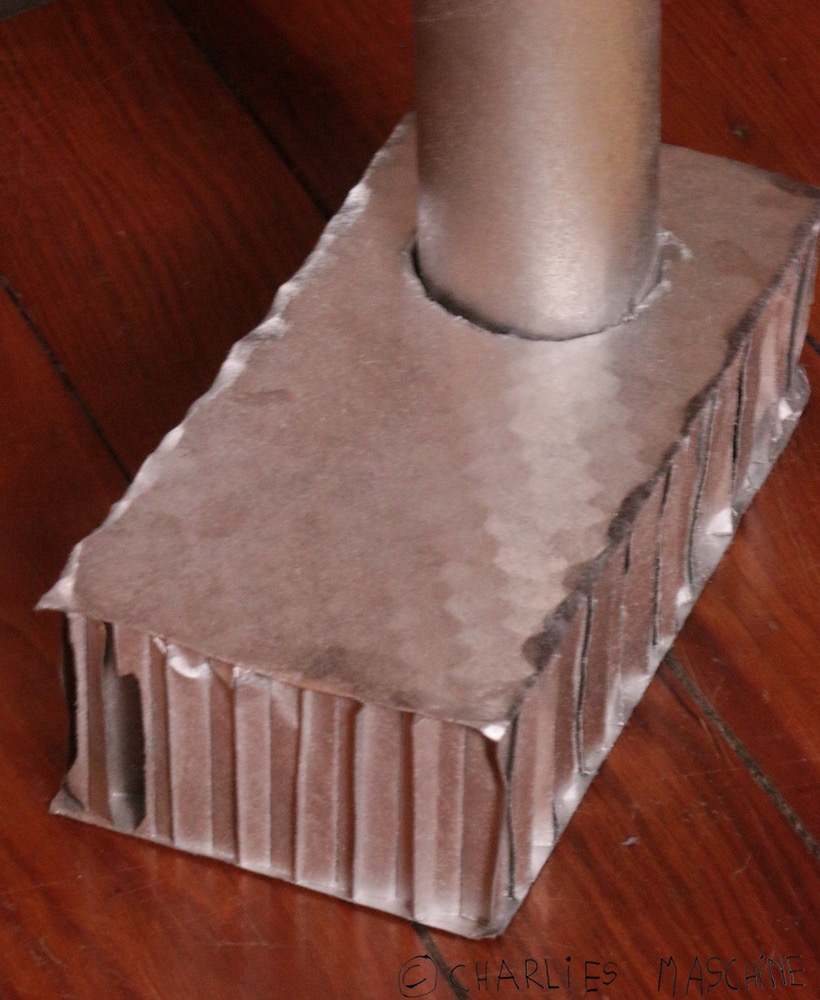
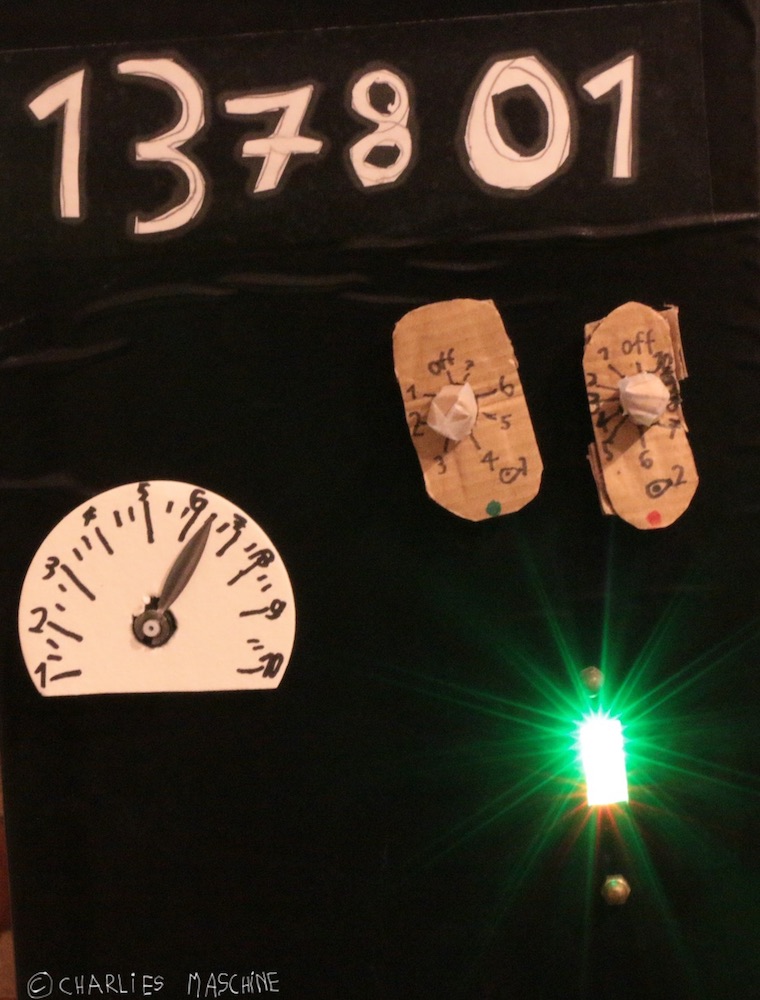
137801 is rather photogenic, don’t you agree?
.

Oh dear, tomorrow is Carnival party! "What costume...?" - "I'll dress as a machine, and of course it needs to really work!!!"... "okay..."
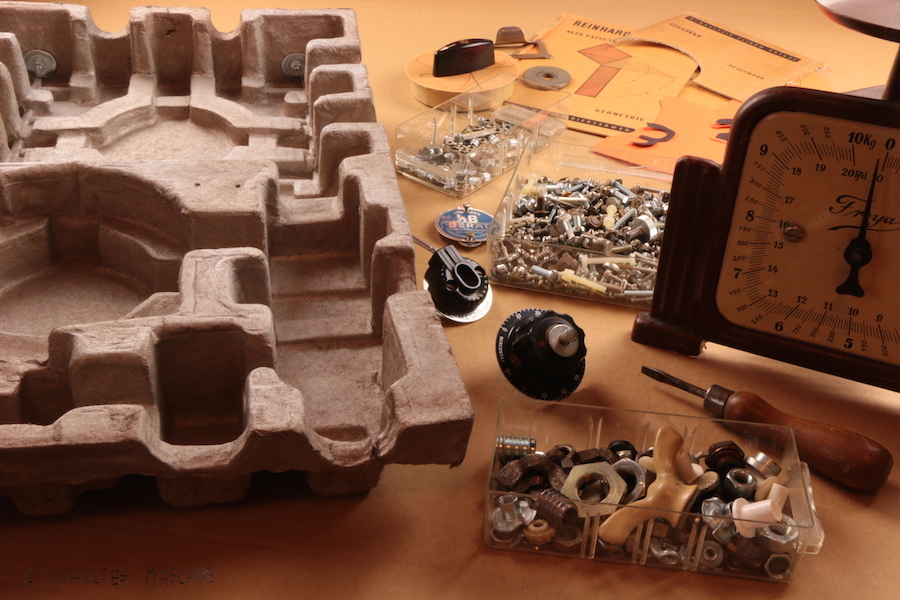

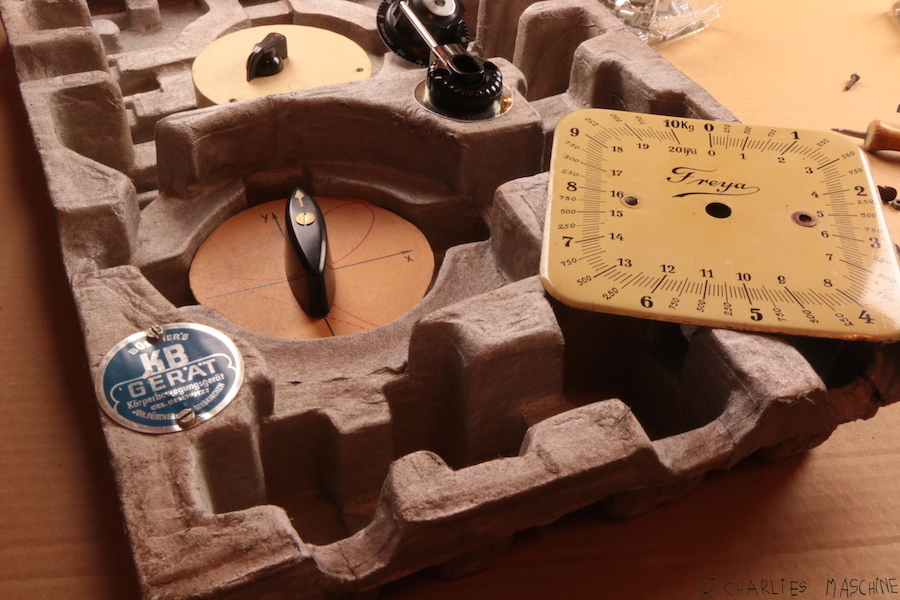

We used parts of cardboard packaging from a vacuum cleaner and sprayed it with silver paint and clear varnish. It is important to fix screws with huge flat washers from the back so that knobs etc won’t get ripped off. Now get at your control knobs and switches! We finished a little late – but now Charlies Körperbewegungsgerät (body movement apparatus) fully functions!

At an arts and crafts fair Charlie watched a man making ropes with a historic Rope Making Machine. Charlie rebuilt this machine with LEGO-TECHNIC bricks (much smaller, of course). And it works!
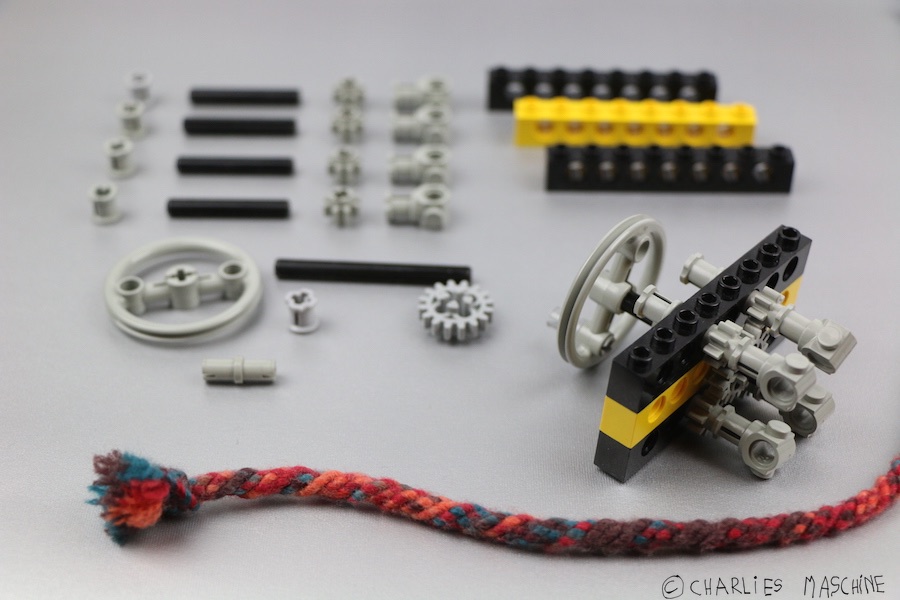
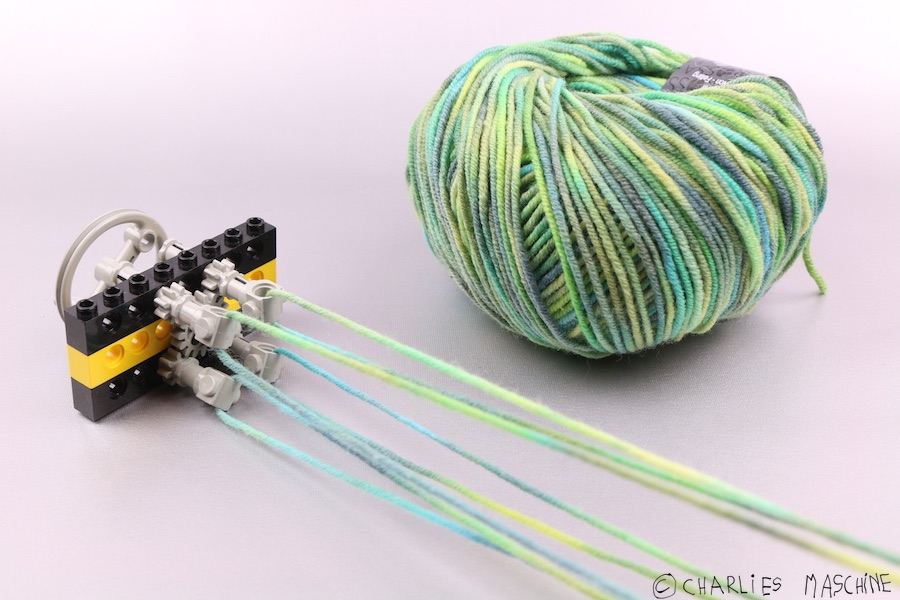
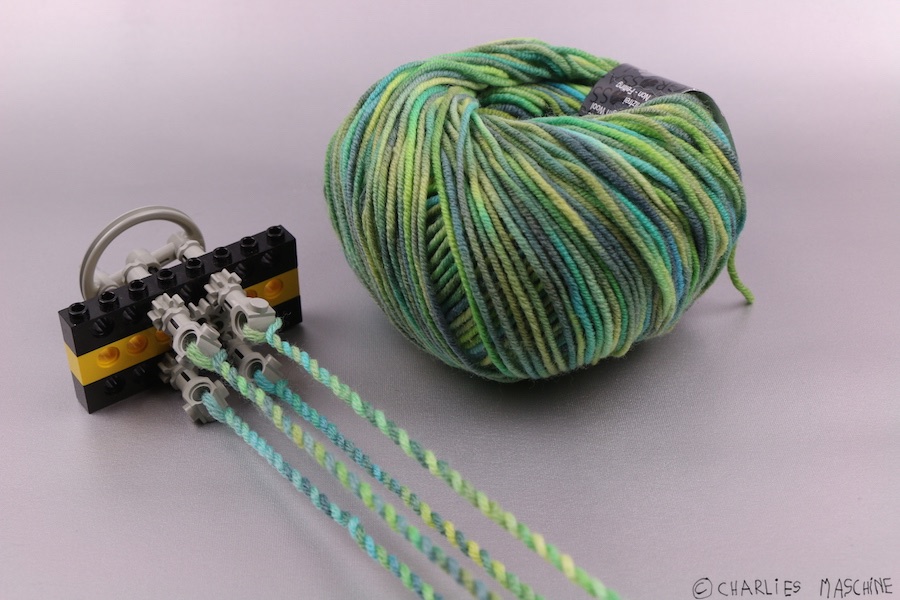

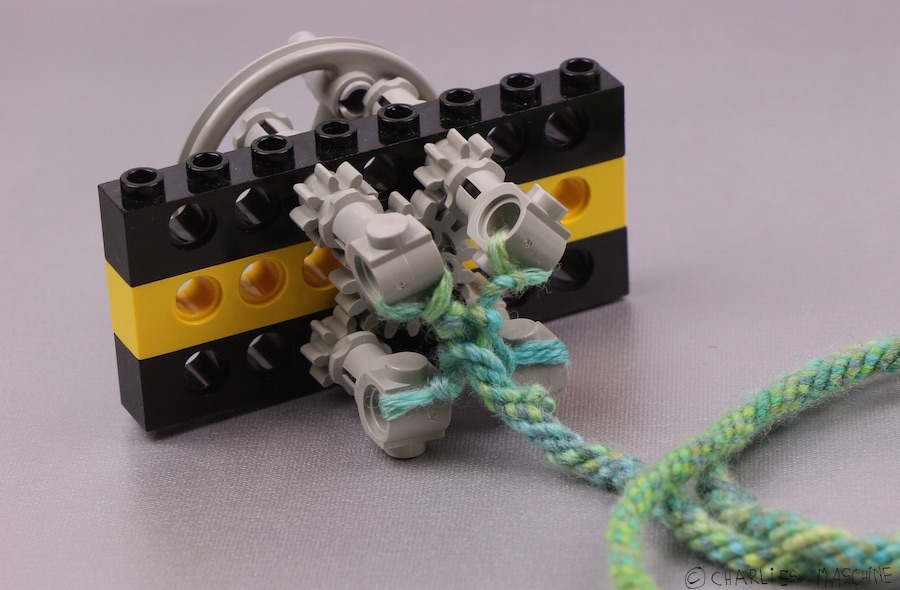
You need a ball of wool and someone to help you gently pull at the strings while you turn the handle of your machine. It is a bit difficult at first, but with the third try you’ll make it!

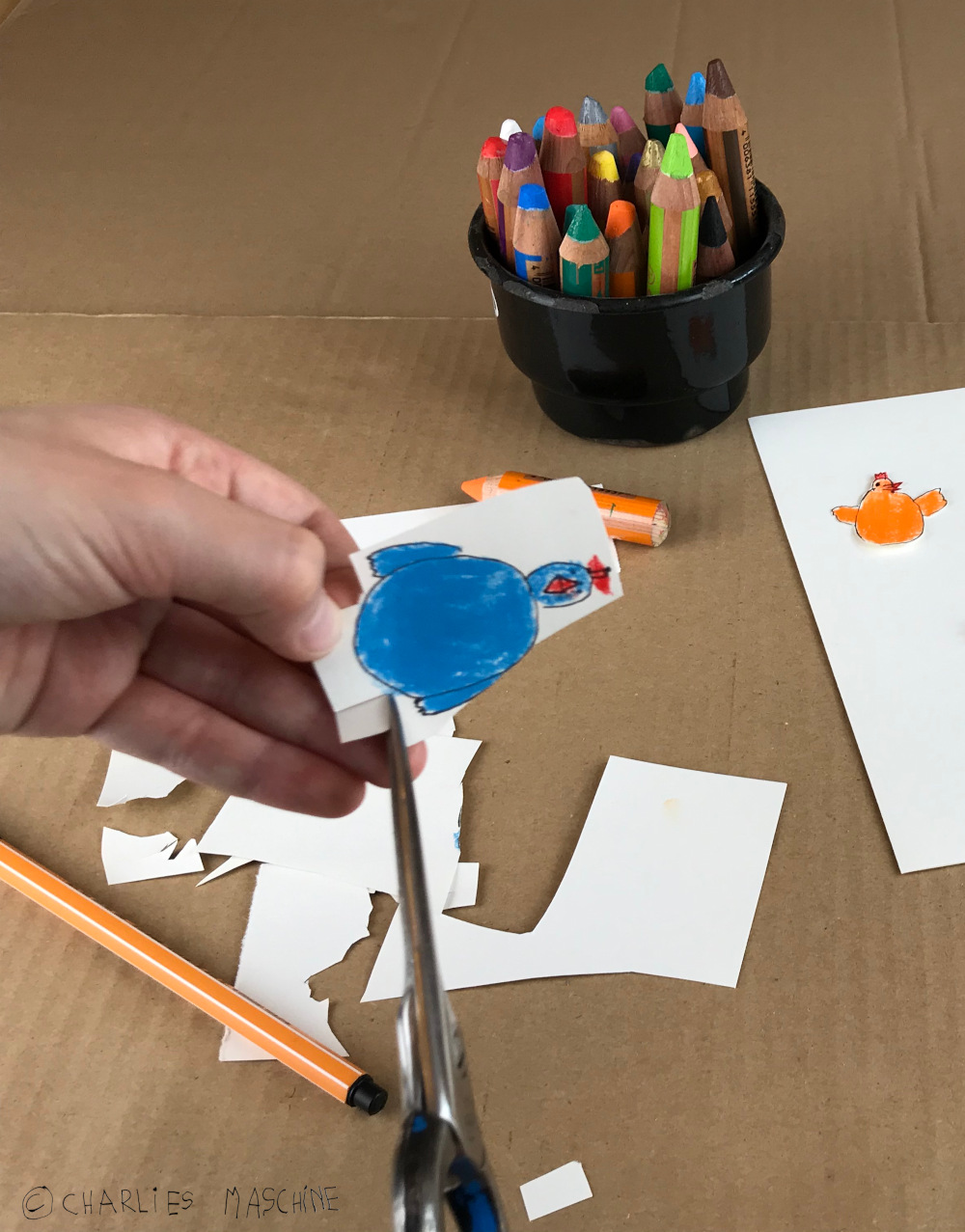
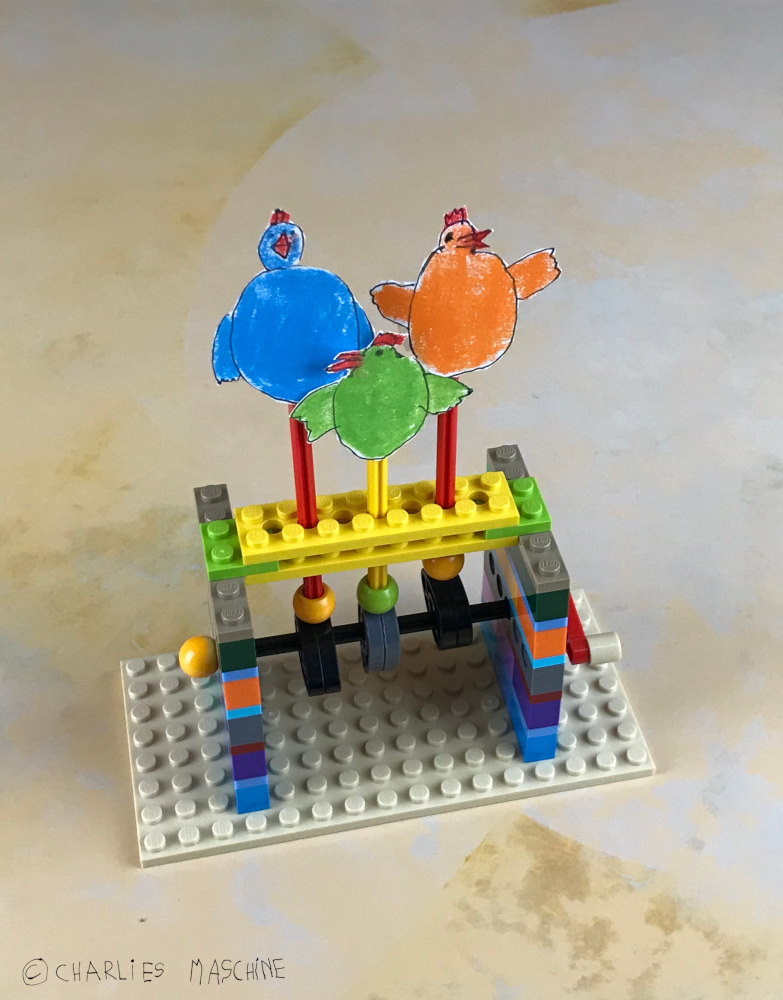
... Lego. The video shows the bits you need for building a chicken machine with crank handle. Those chickens are really excited.

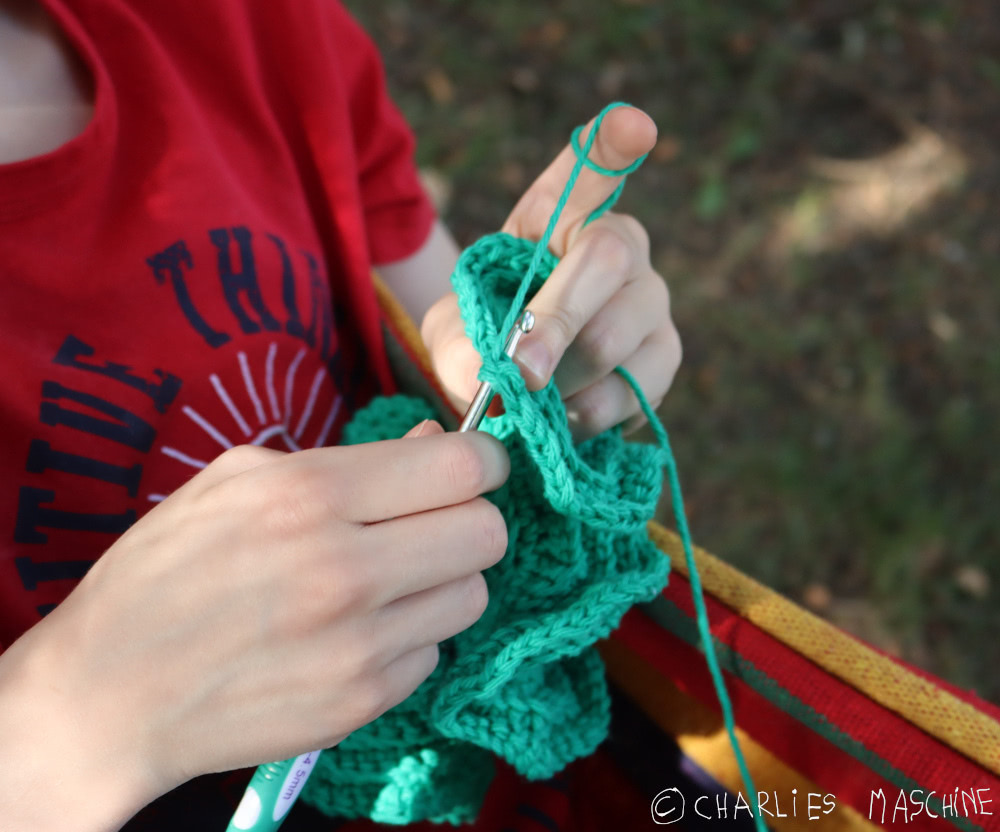

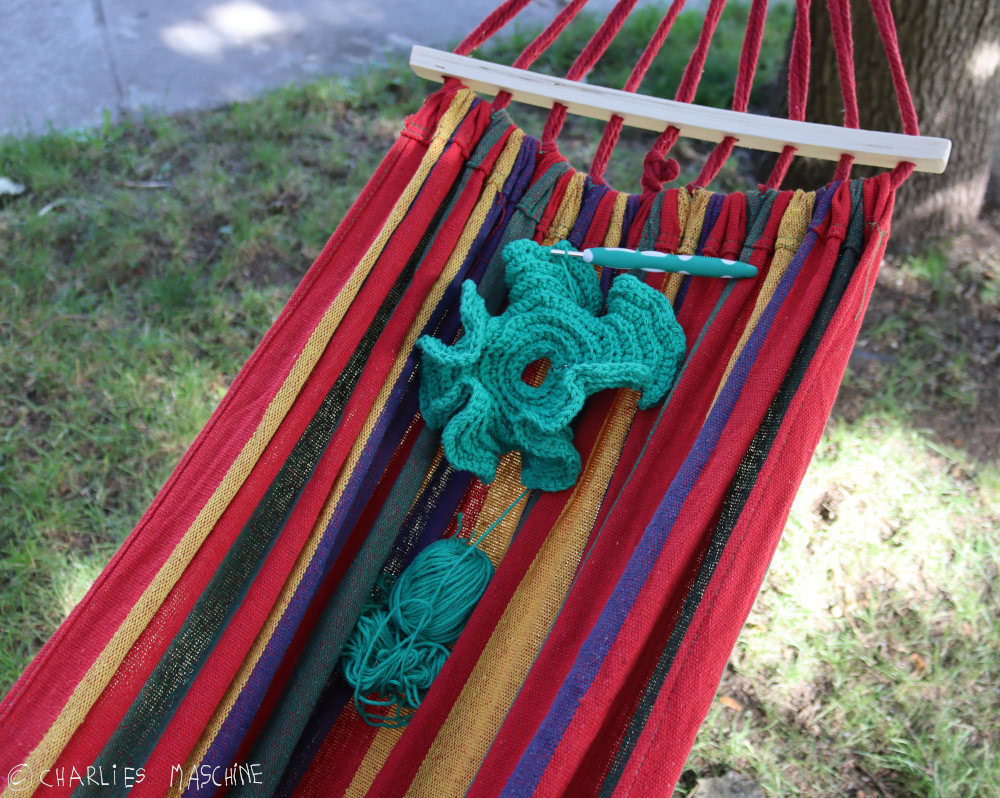
... a hammock to take some time to ponder about exponential growth. Also plant leaves, corals, and possibly the universe have a structure which is far easier to grasp when doing some hyperbolic crocheting.


... a moustache. You can use wool to knit or crochet one. Charlie used a gluestick to fix his to his own face - not entirely sure this was a clever thing to do.

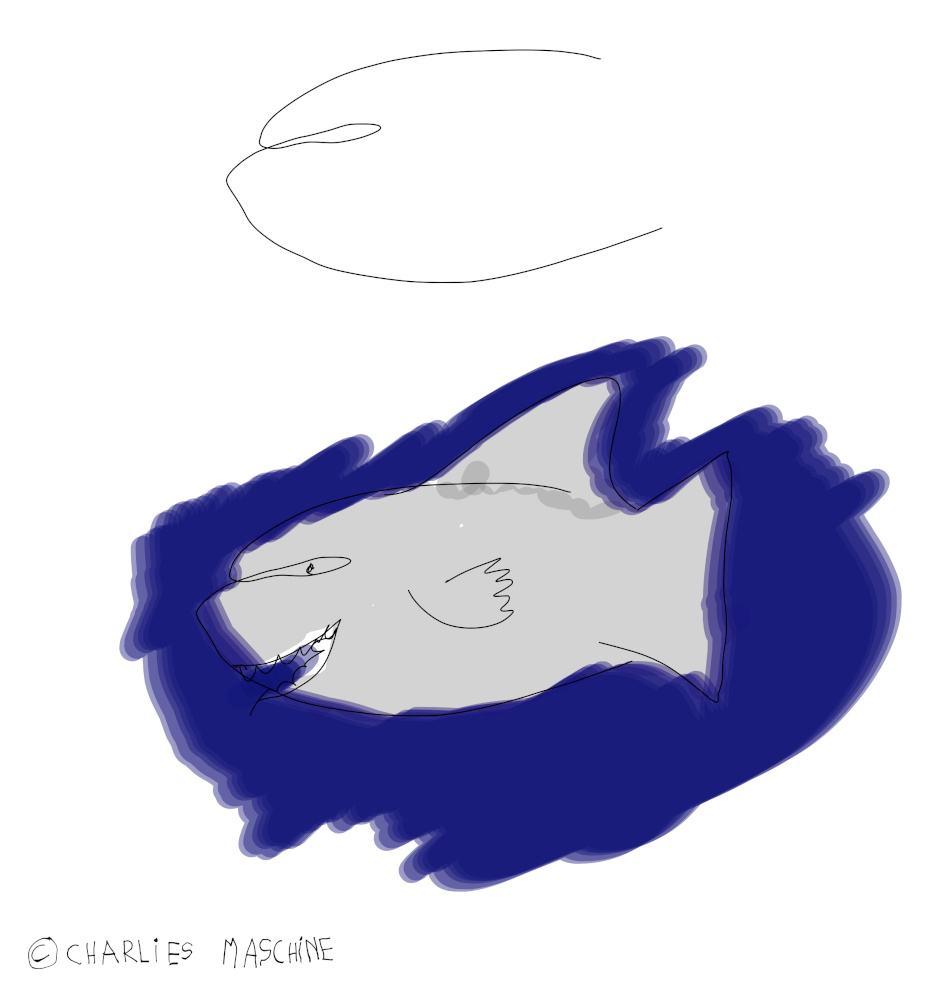
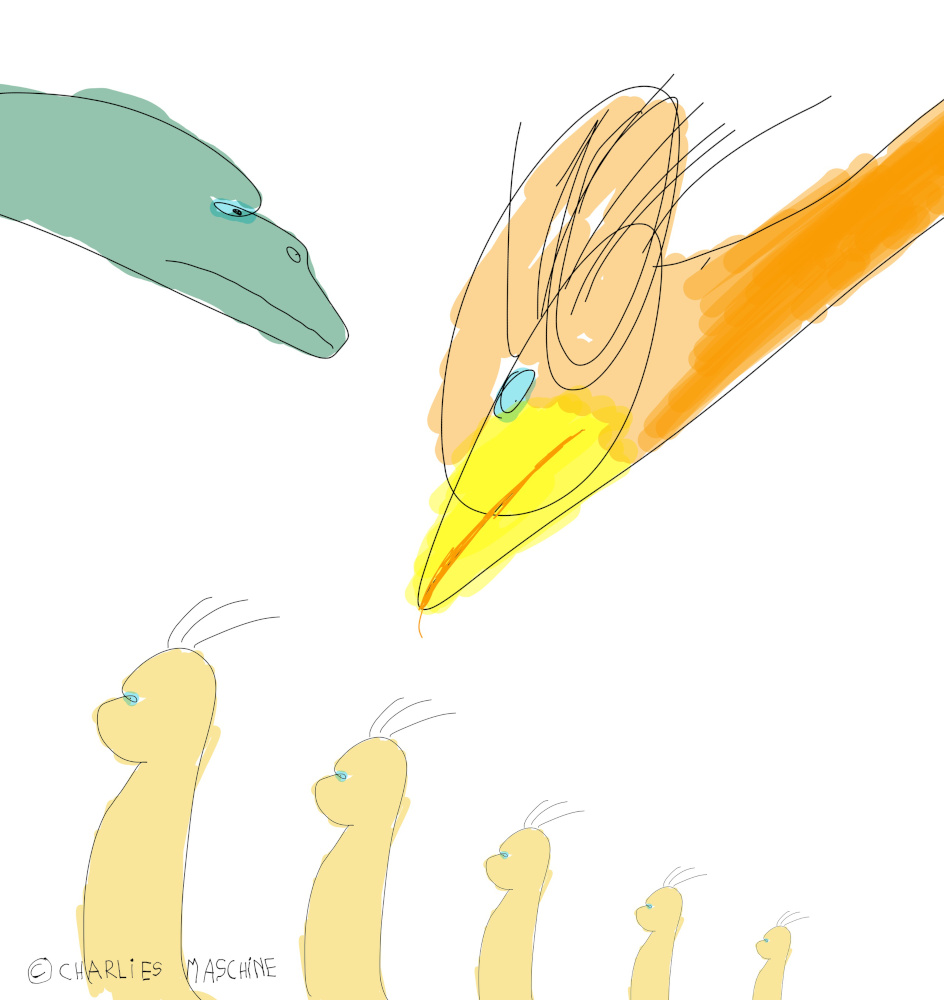
... a doodly mood. On some days, you have that swing in your arms and whoopey there's another doodle character. Colour them in, mirror or duplicate a few and let them have a party!

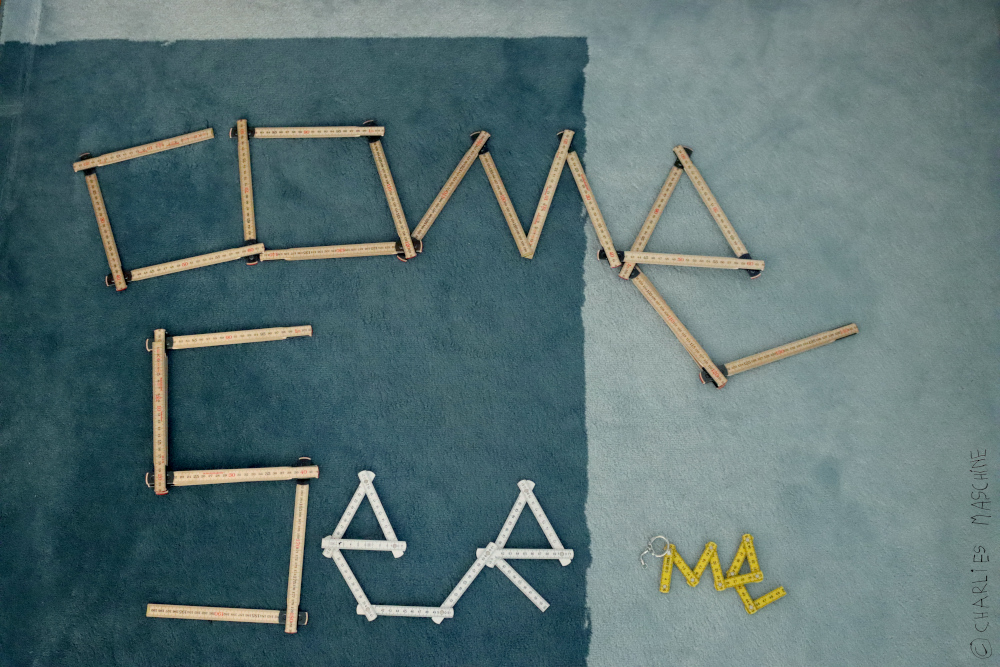
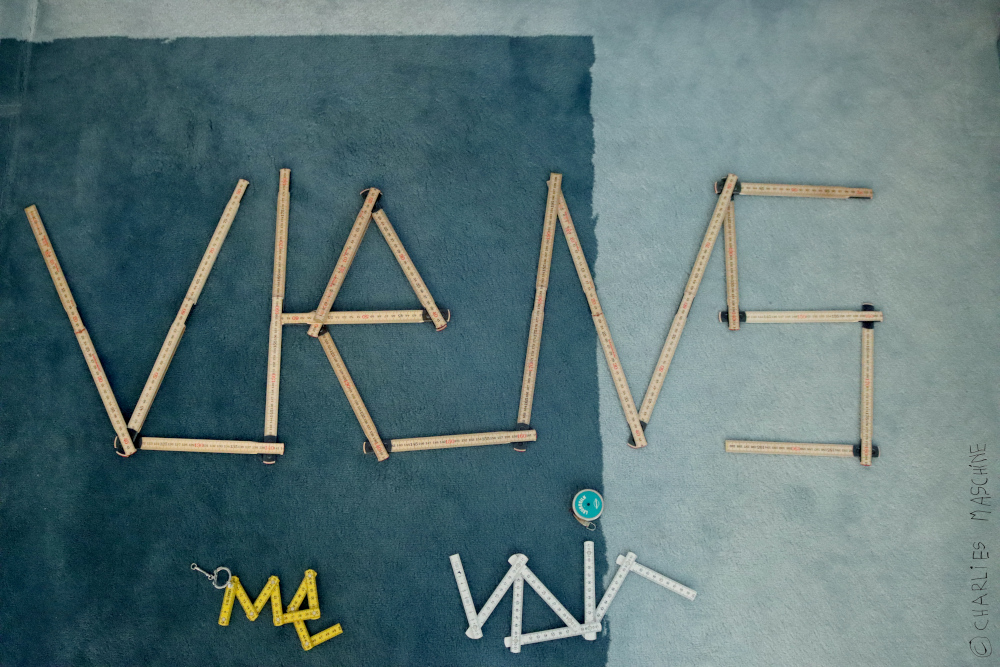
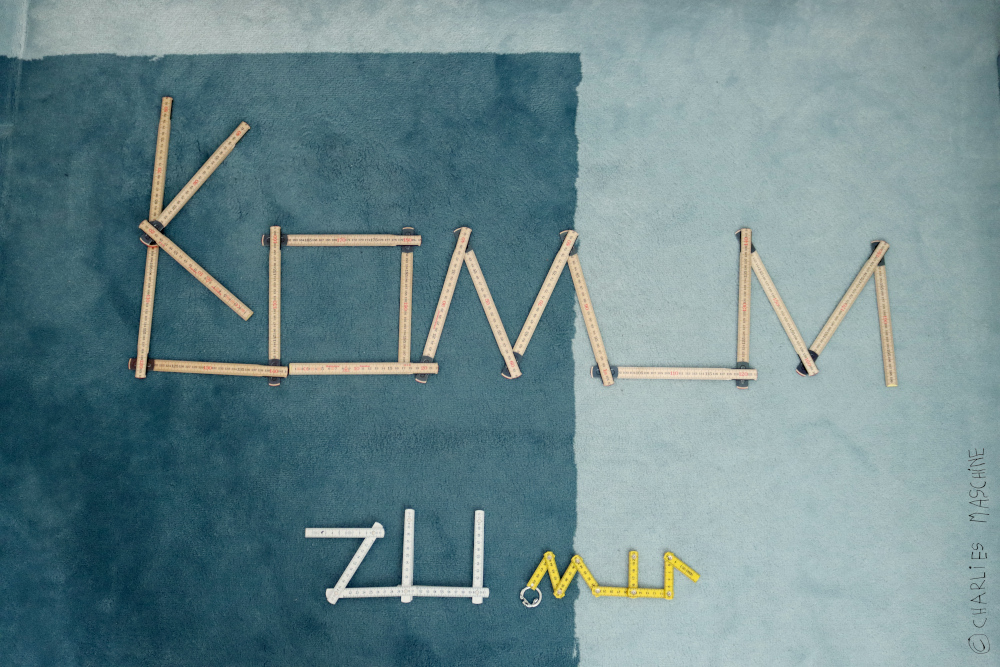
... carpenter's rules. Important messages in a few meters.

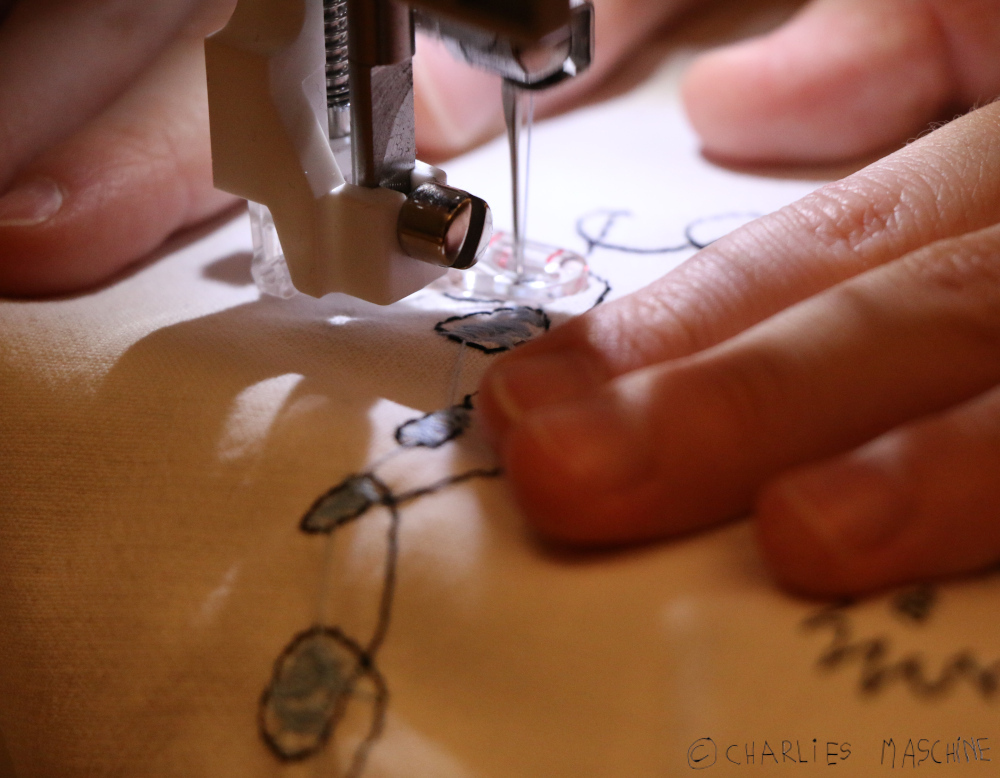
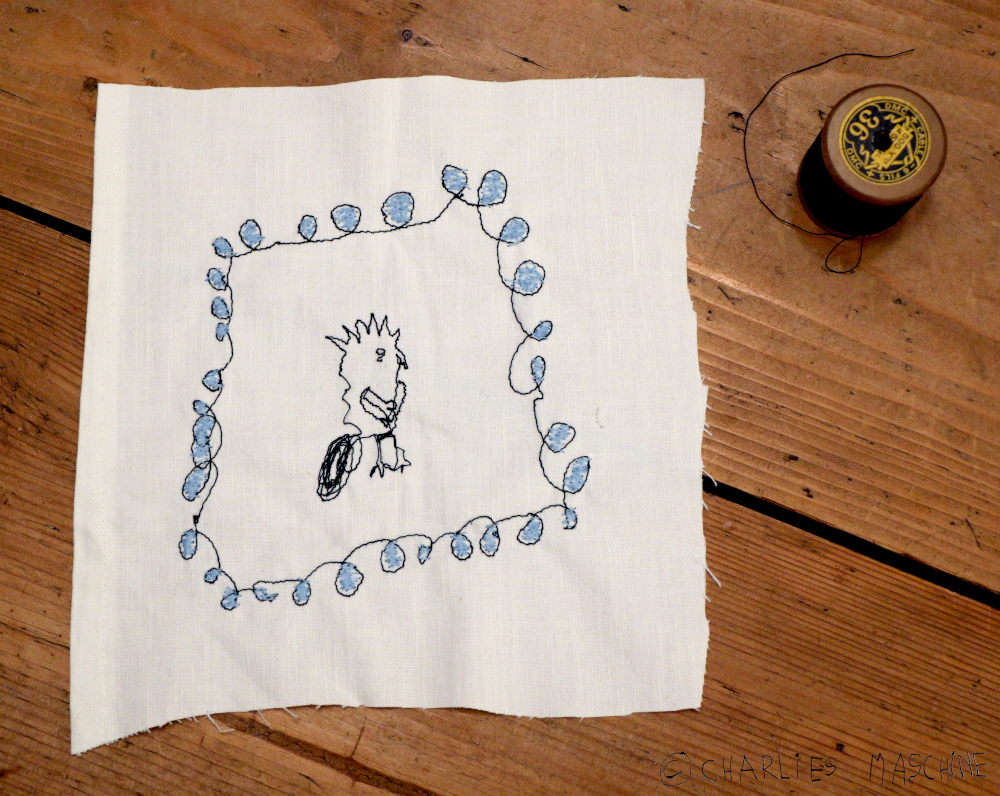
... a quilting foot. The coolest ever sewing machine accessory part! Who‘d have thought that you can easily doodle away with a sewing machine.

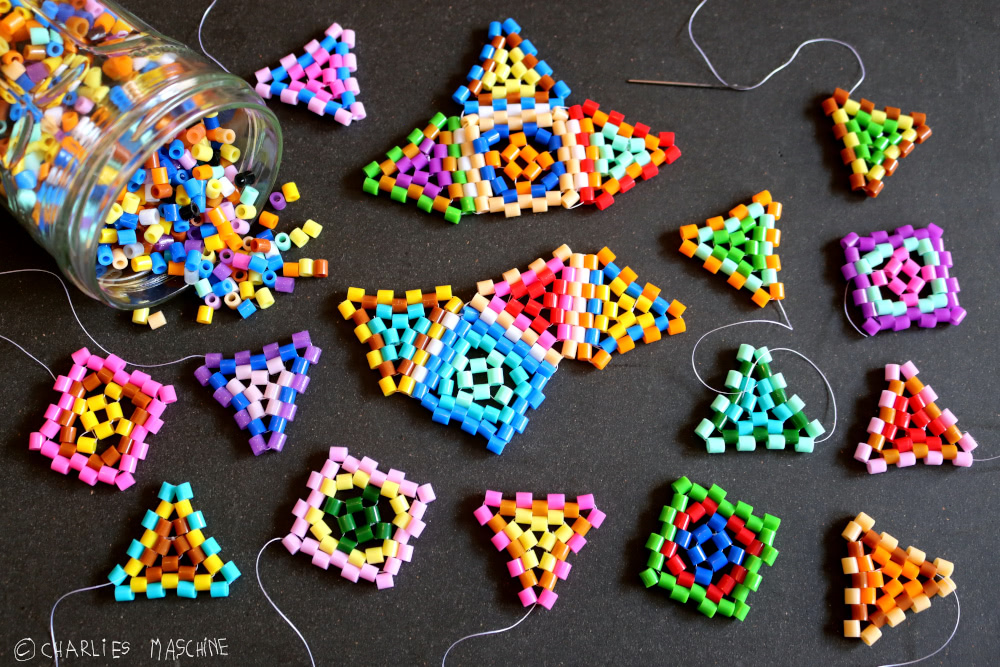

... coloured beads (try to find biodegradable beads). The technique for beadweaving triangles, squares, etc. is called peyote-stitch. With 32 triangles and 6 squares Charlie wants to build a snub cuboctahedron – only it keeps crawling away!

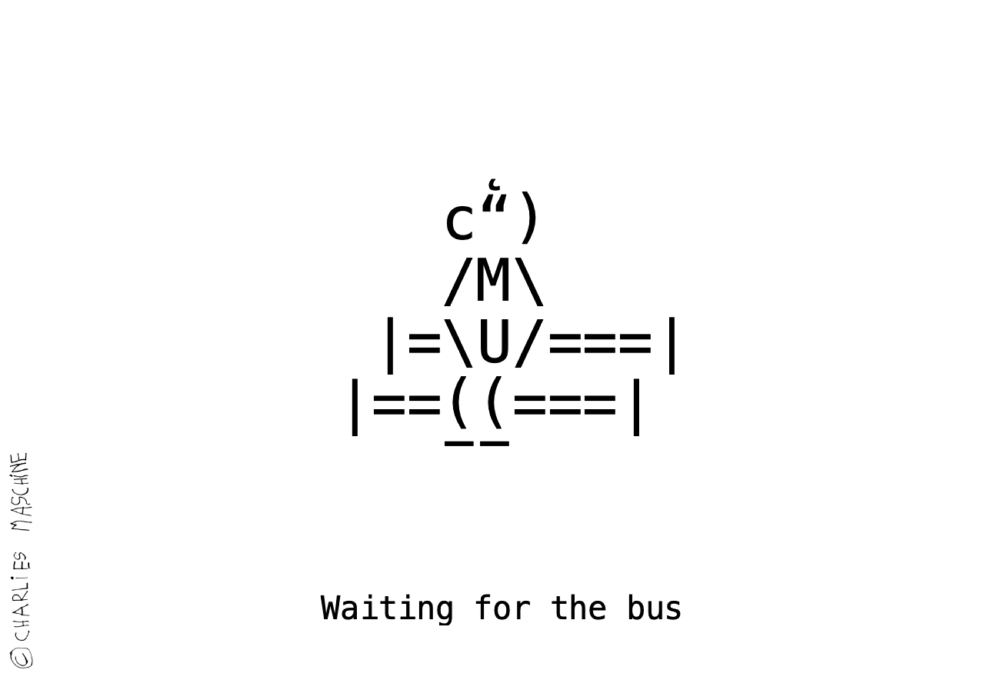
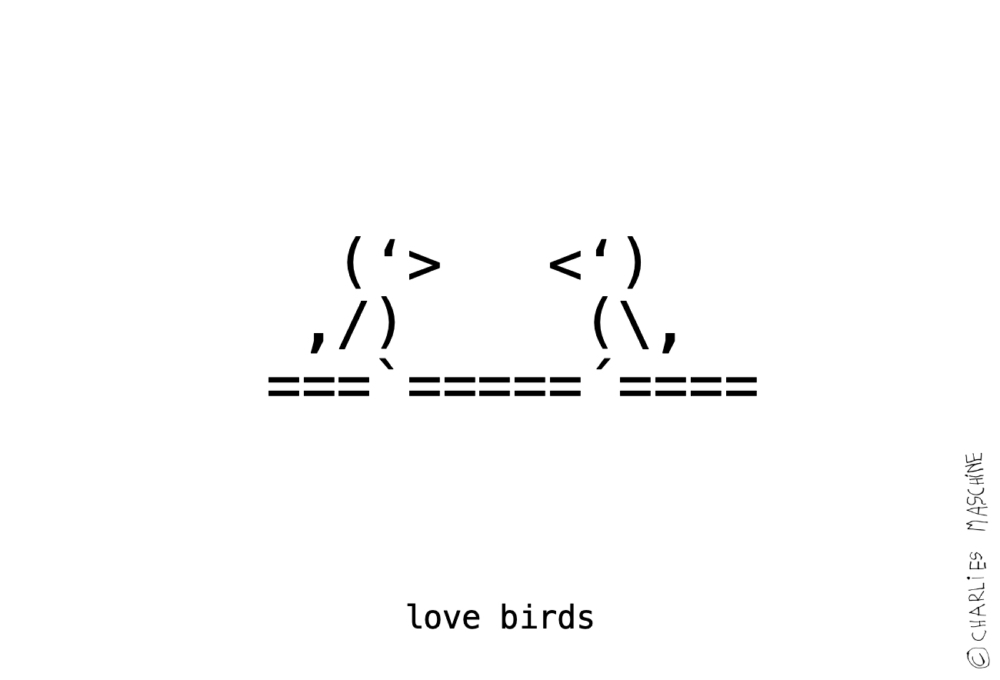
... special characters. Choose a monospaced font and type a picture. This is called ASCII-art.

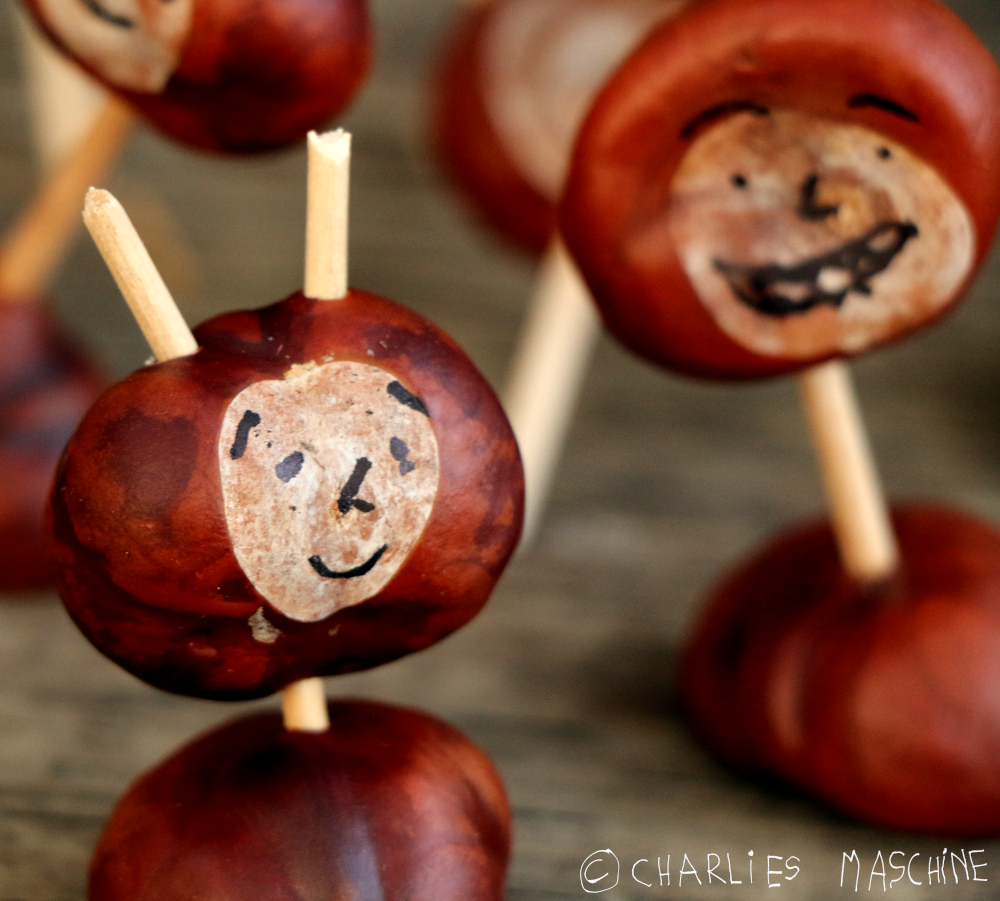
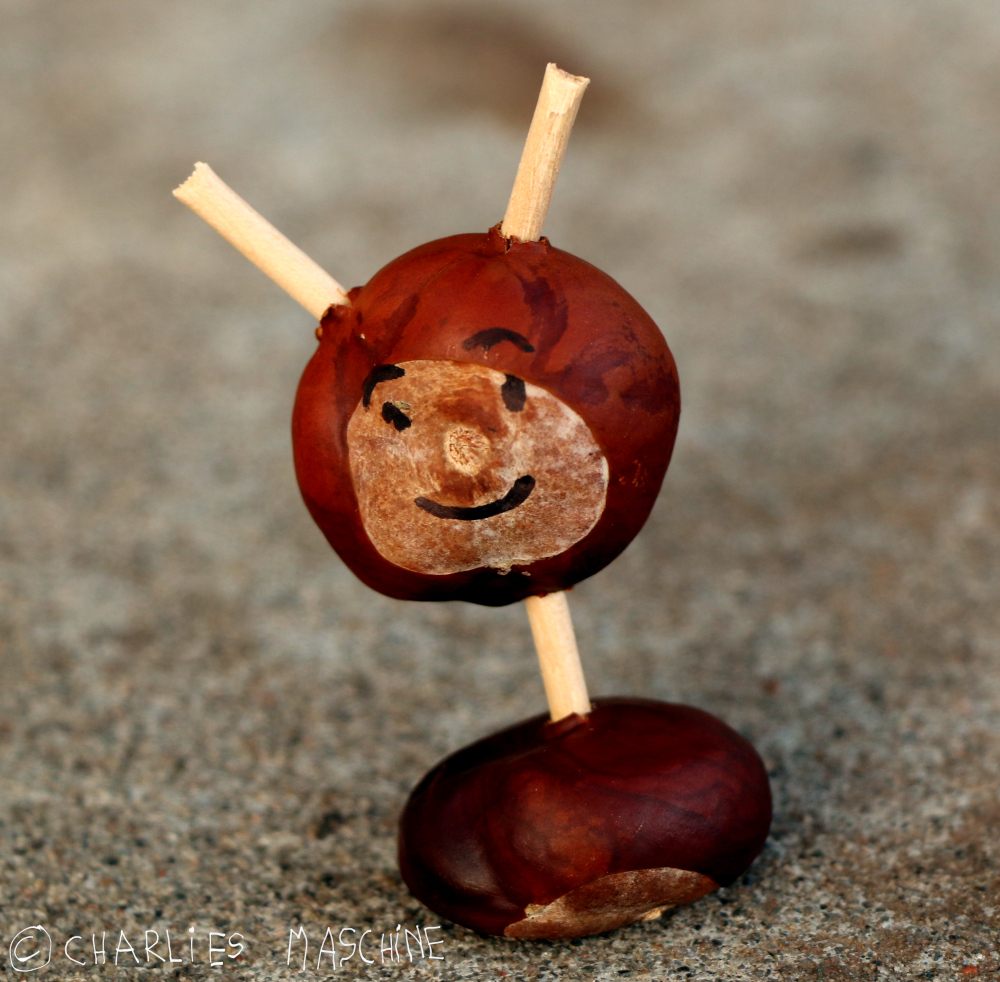
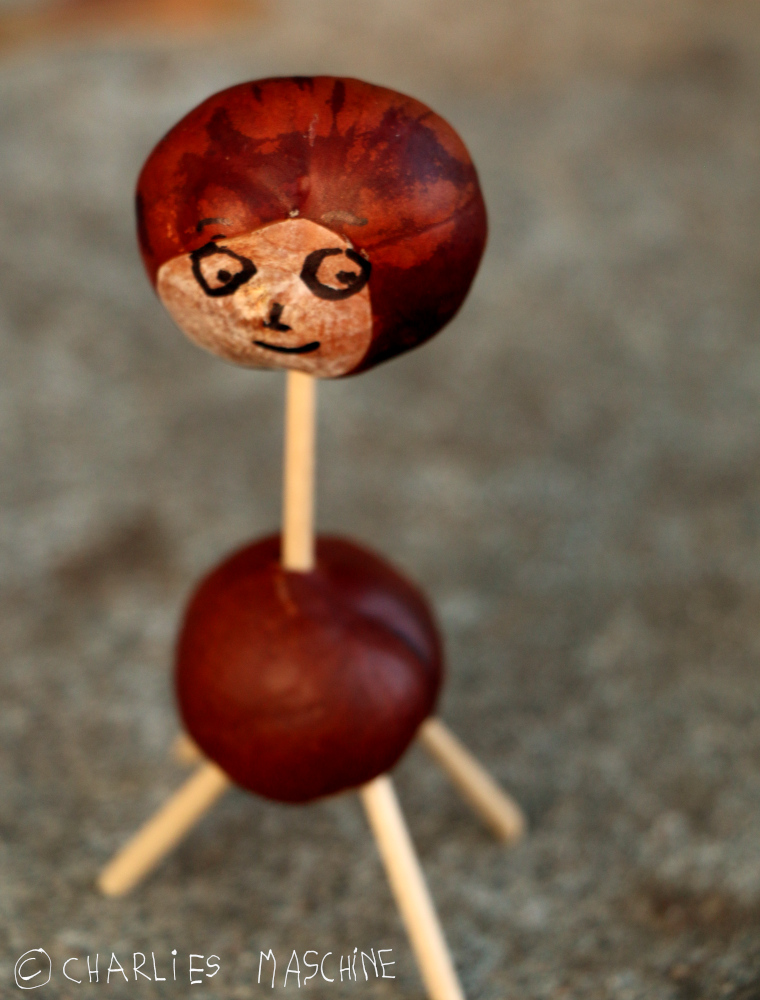
... chestnuts. A vise is a great help when drilling holes into chestnuts with a gimlet. Use pliers to cut the barbecue skewers to the right length.

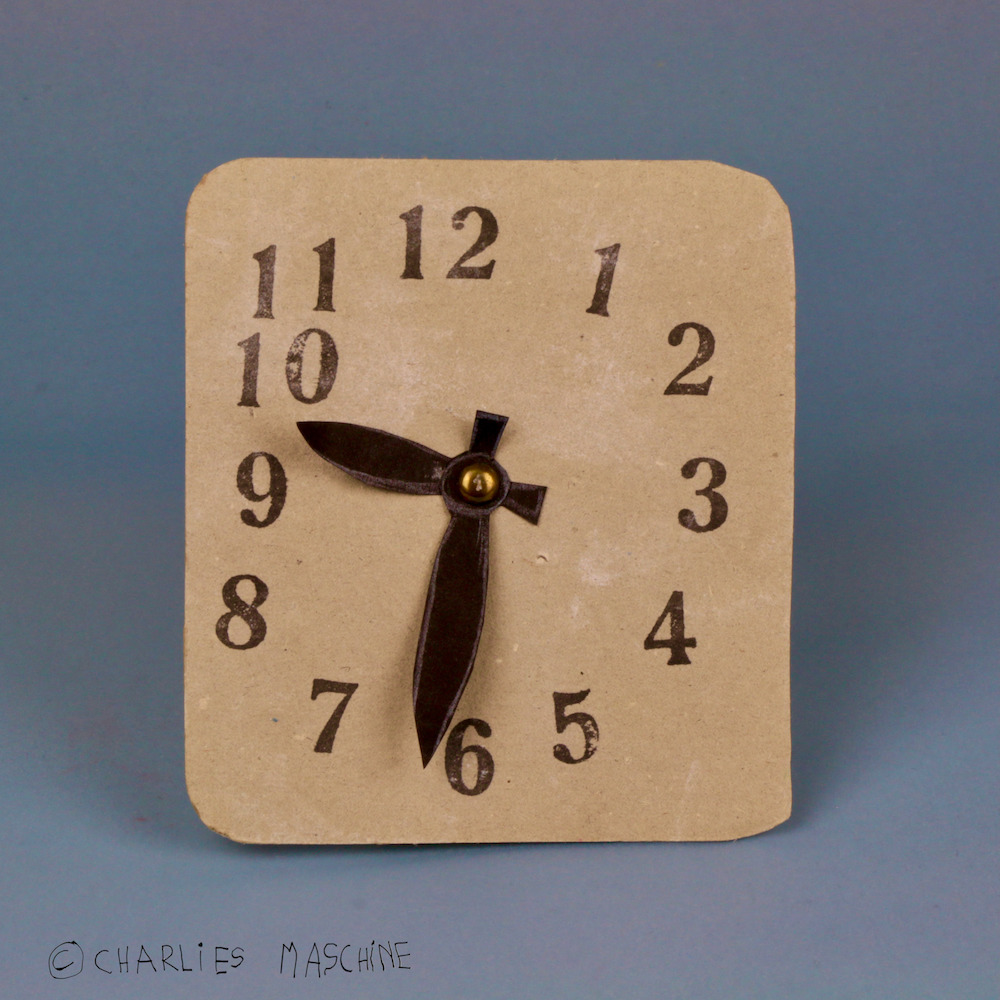
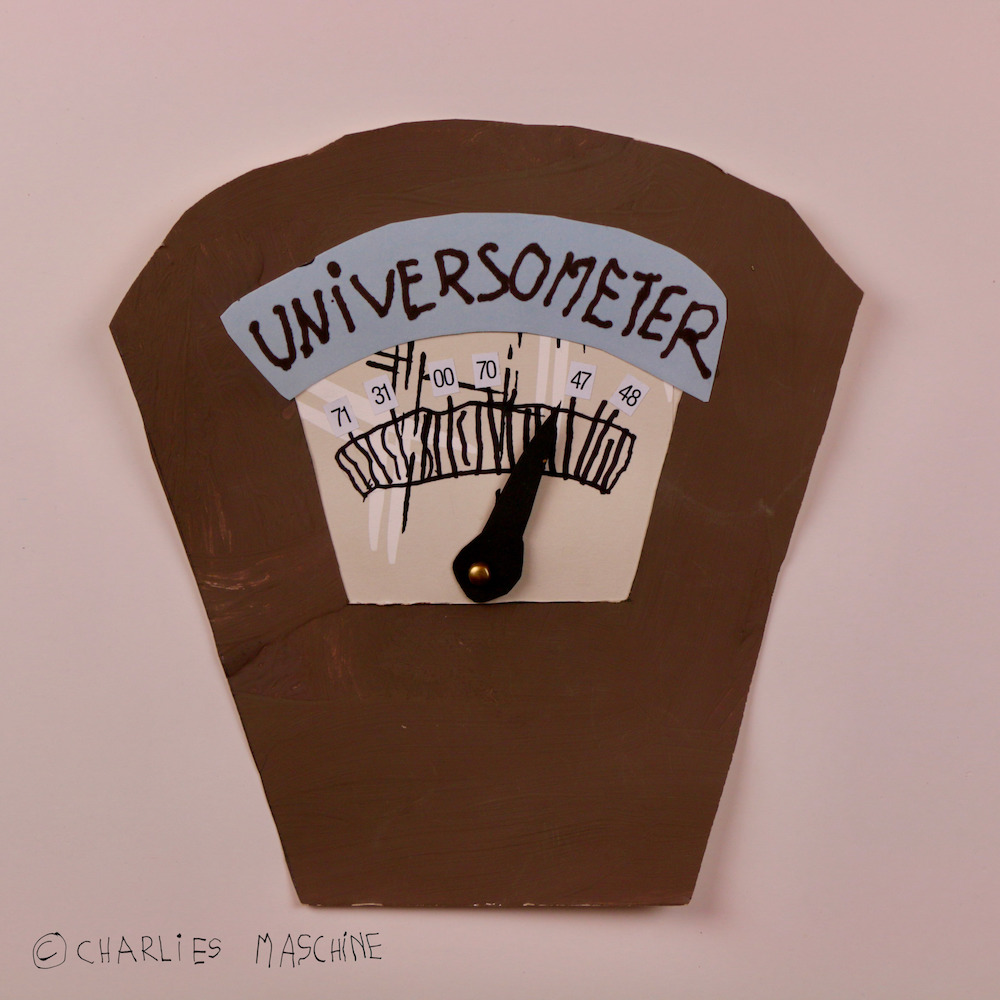
... clock hands. They can be used to build just about anything: A clock that helps you to determine your own time or a universometer that will change the world.

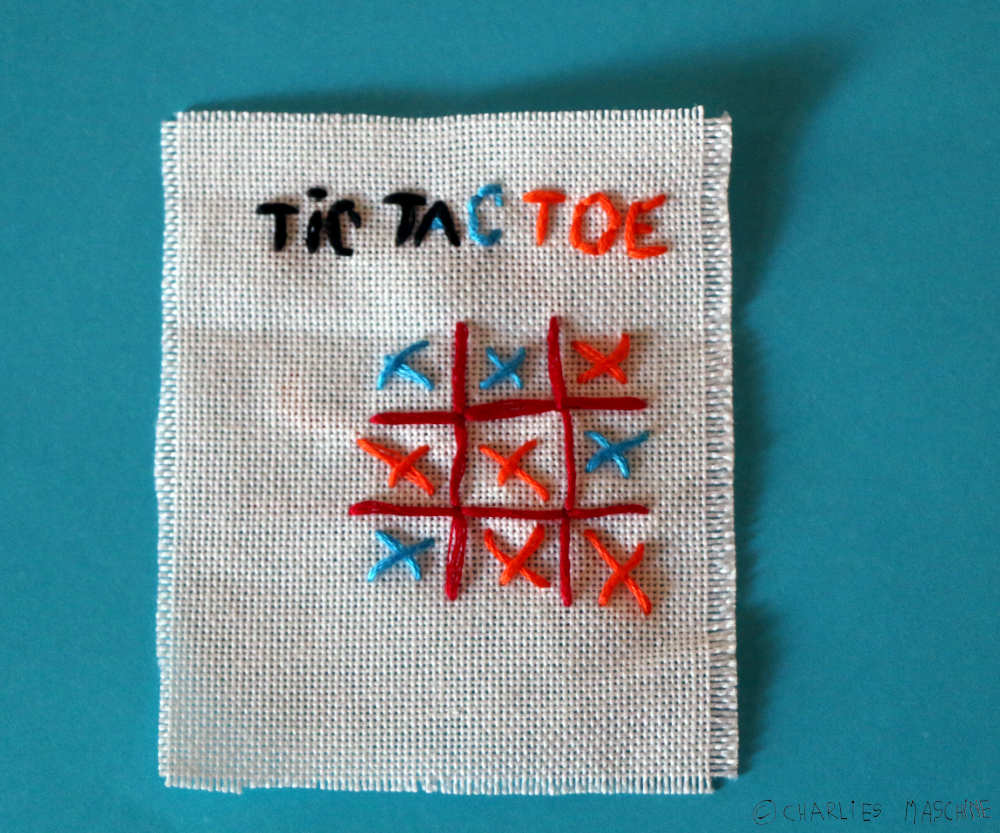
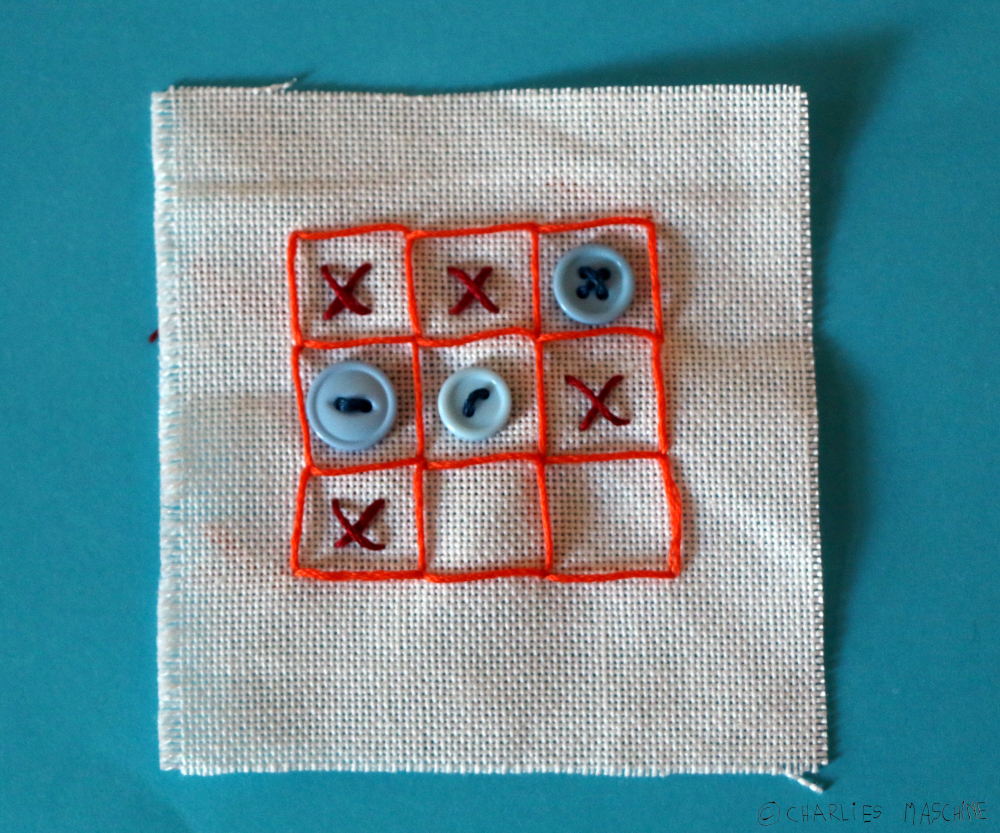
... buttons. Who wins the tic tac toe game – cross-stitches or buttons?

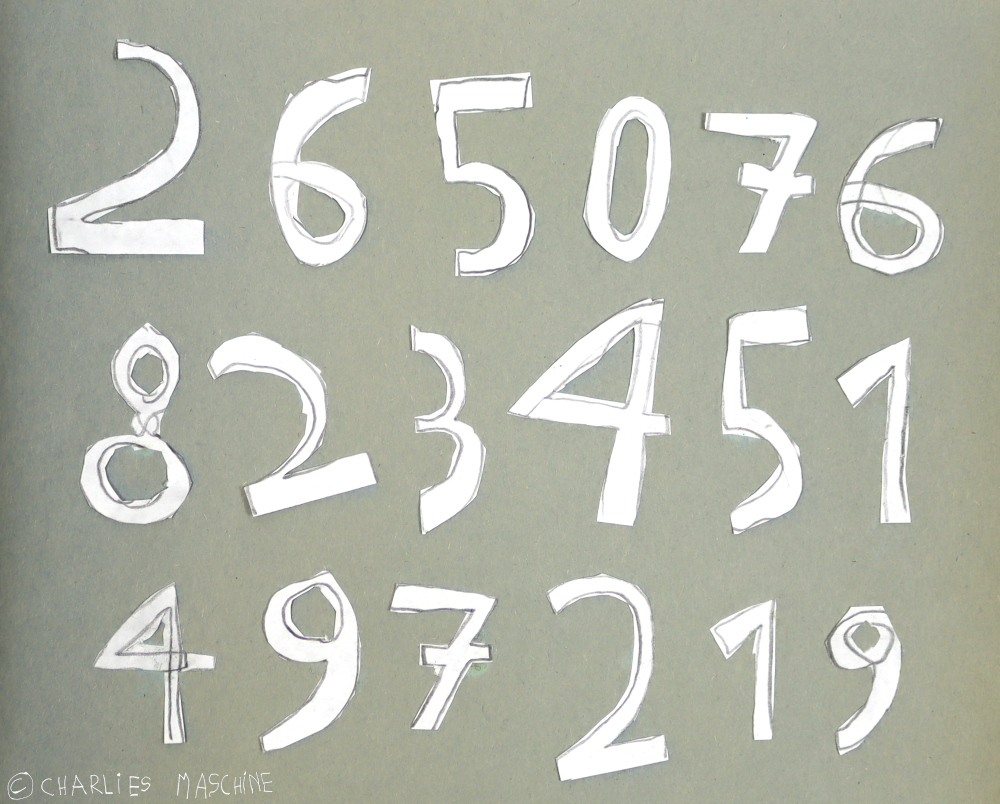
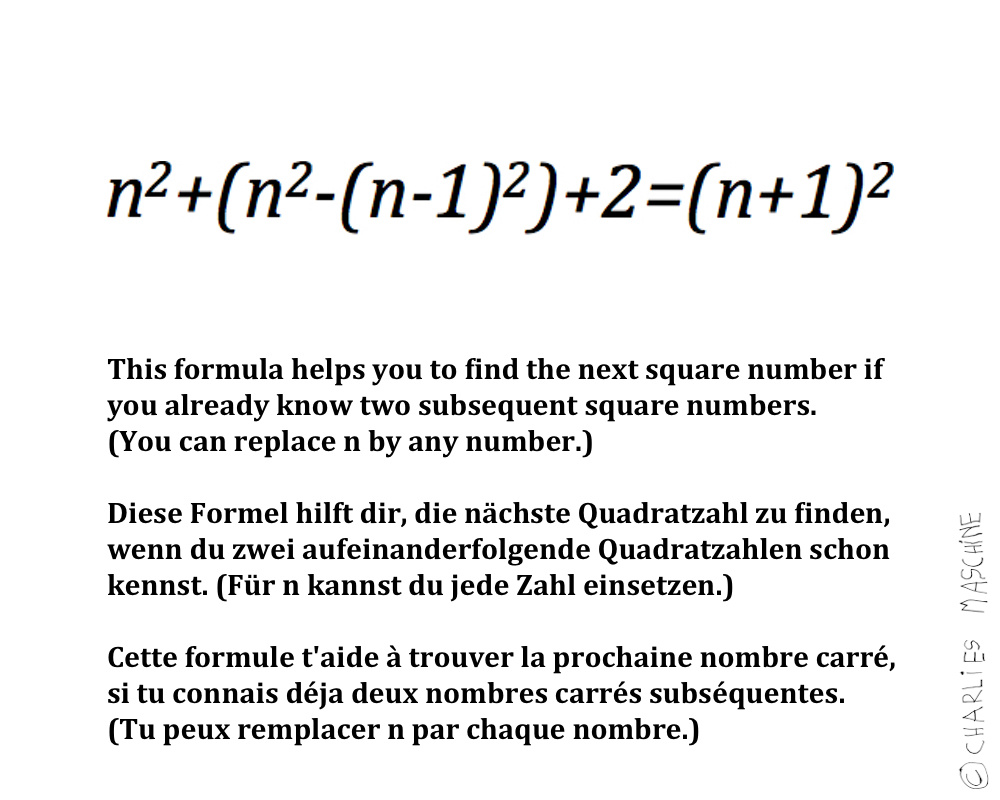
... numbers. You can juggle lots of numbers in your head. Sometimes you end up with a formula.

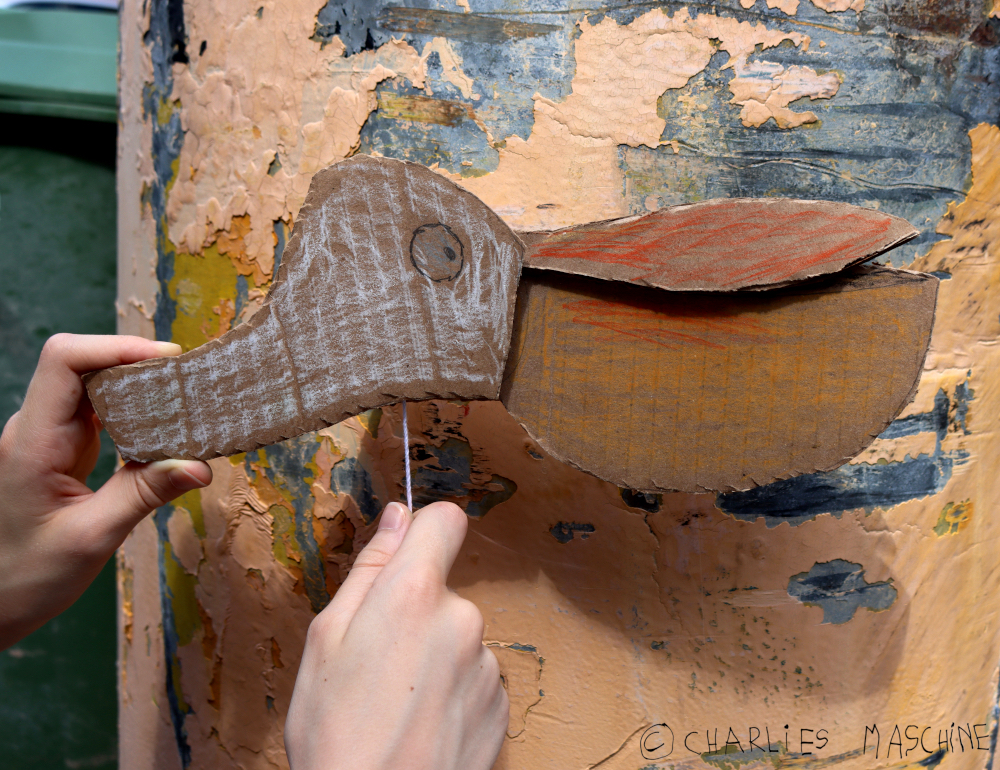
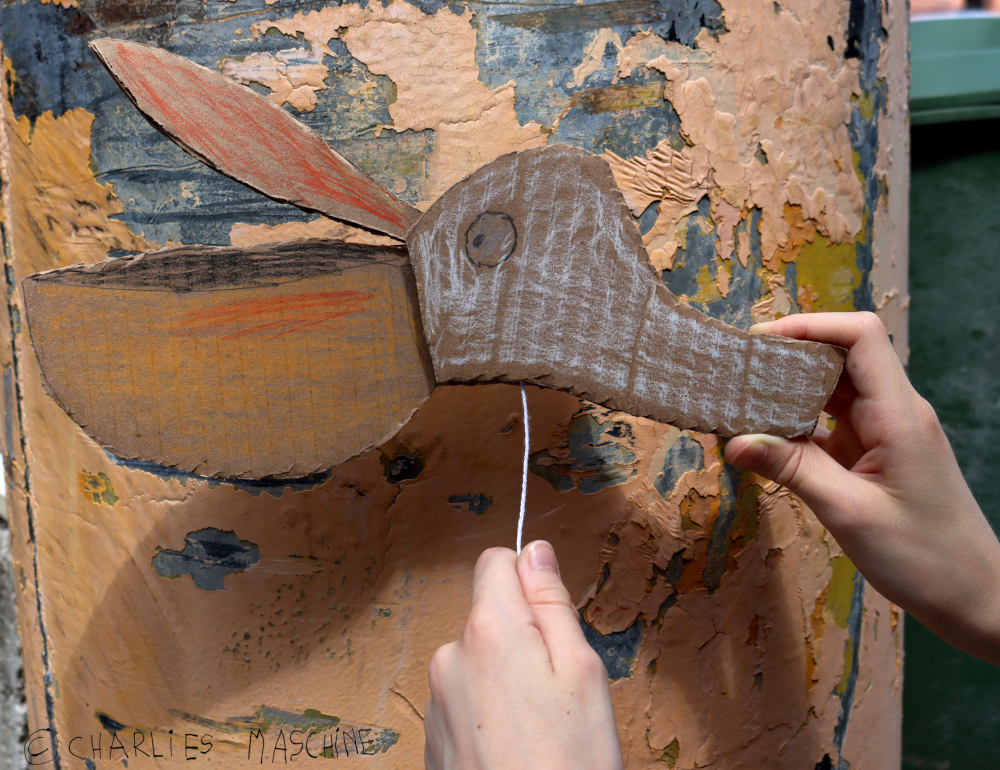
... a move. So you'll get cardboard boxes. A Jumping Jack string mechanism also works for simple movements, like a pelican's beak.

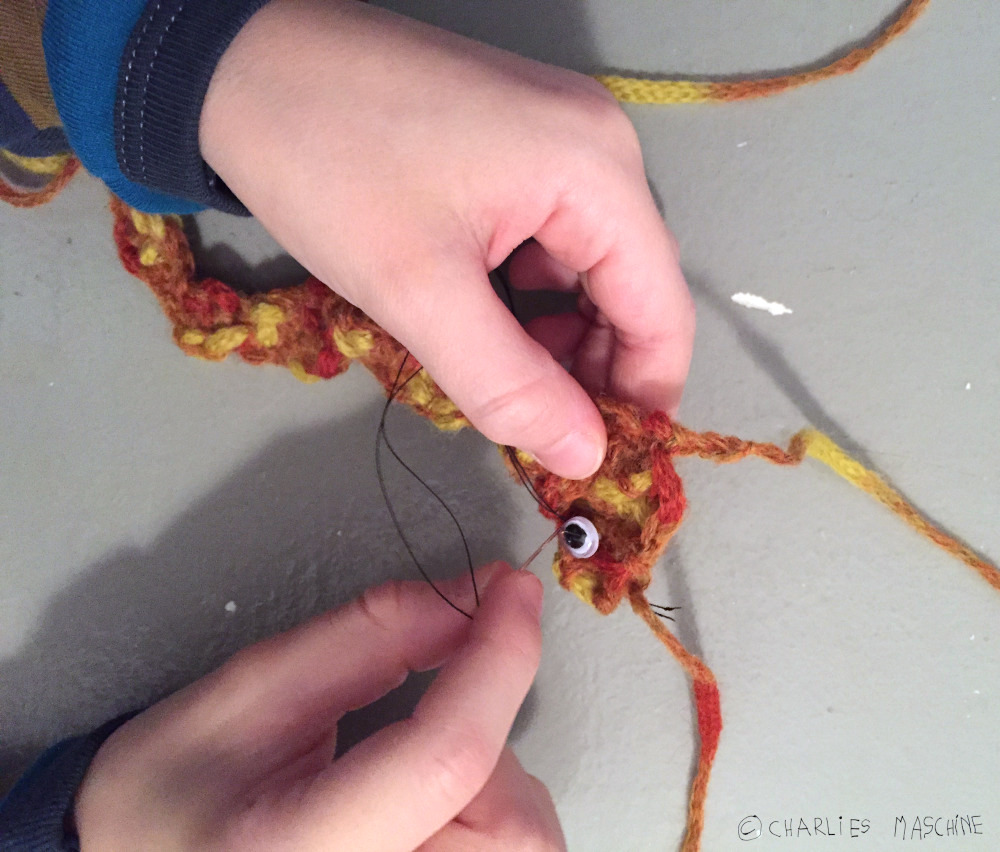
... crochet hook. Oh look, it turned out to be a vermicious knid! A what? A vermicious knid, you know, from Roald Dahl’s “Charlie and the Great Glass Elevator”.
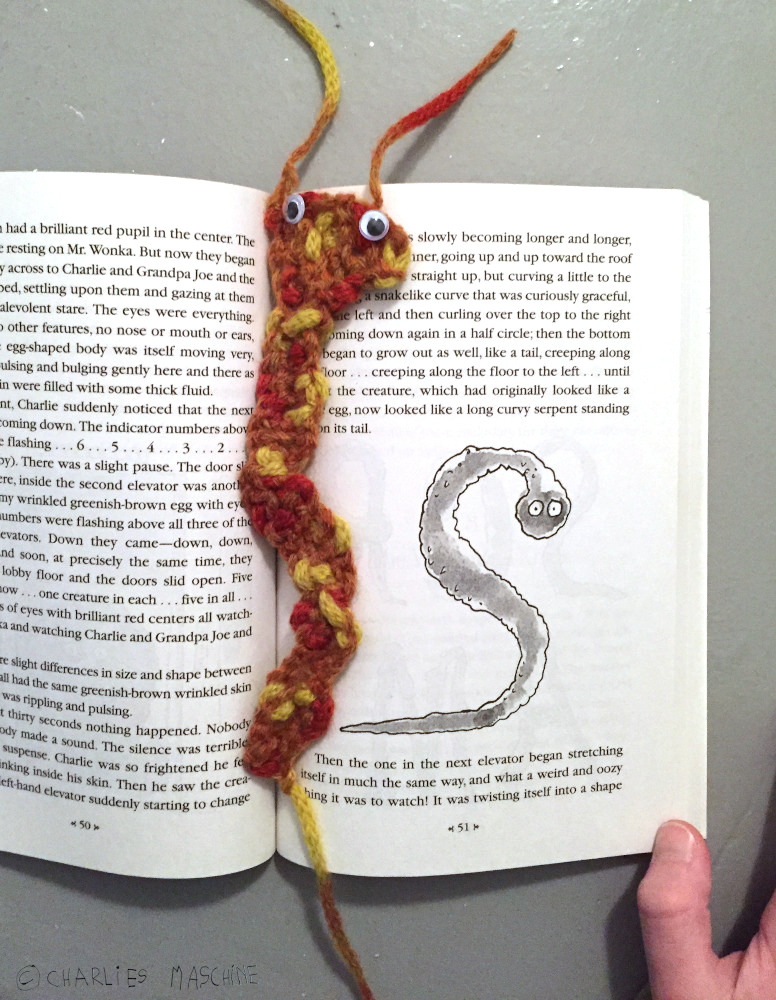
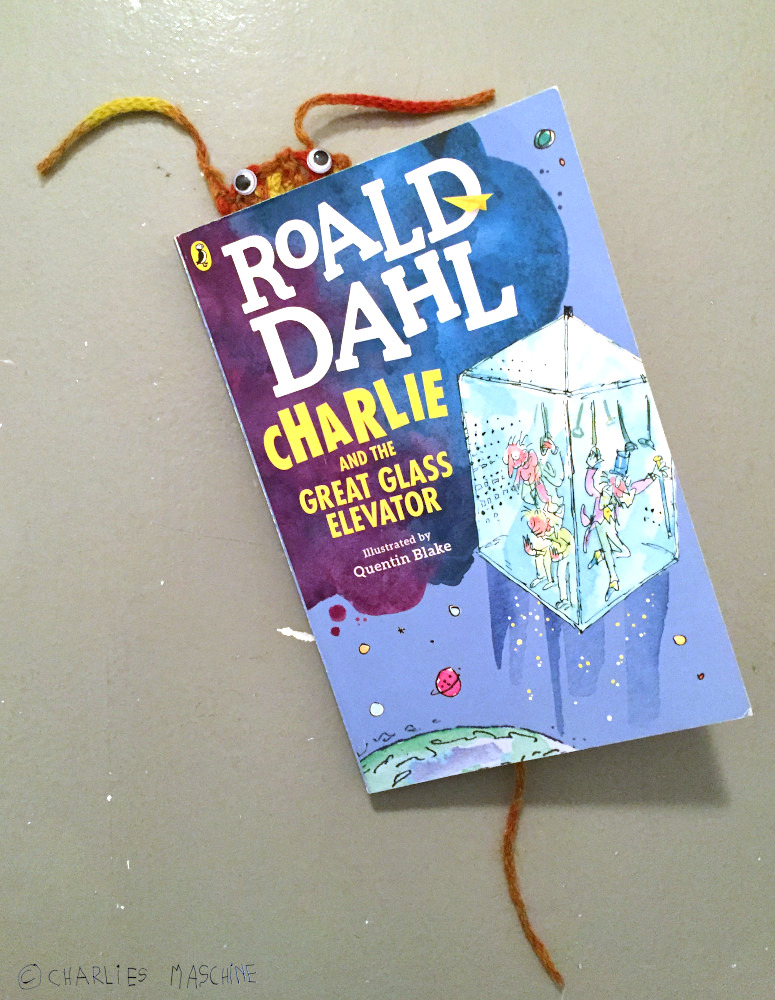

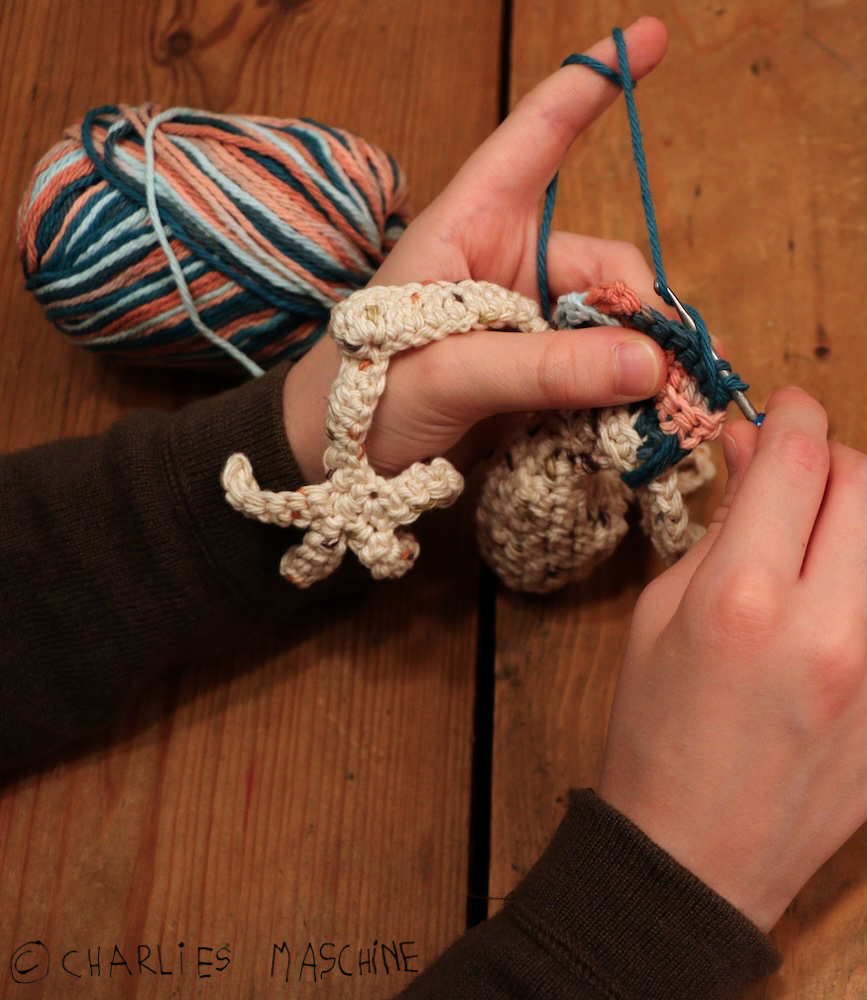
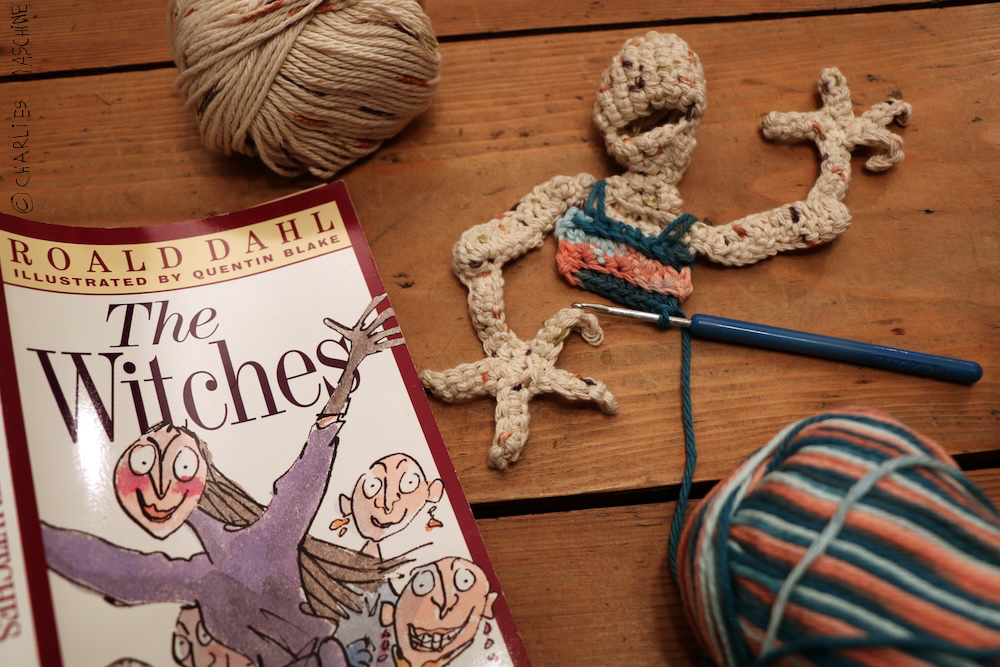
... another book cover with drawings by Quentin Blake. Charlie's witch looks pretty scary with its wig and eyes still missing.

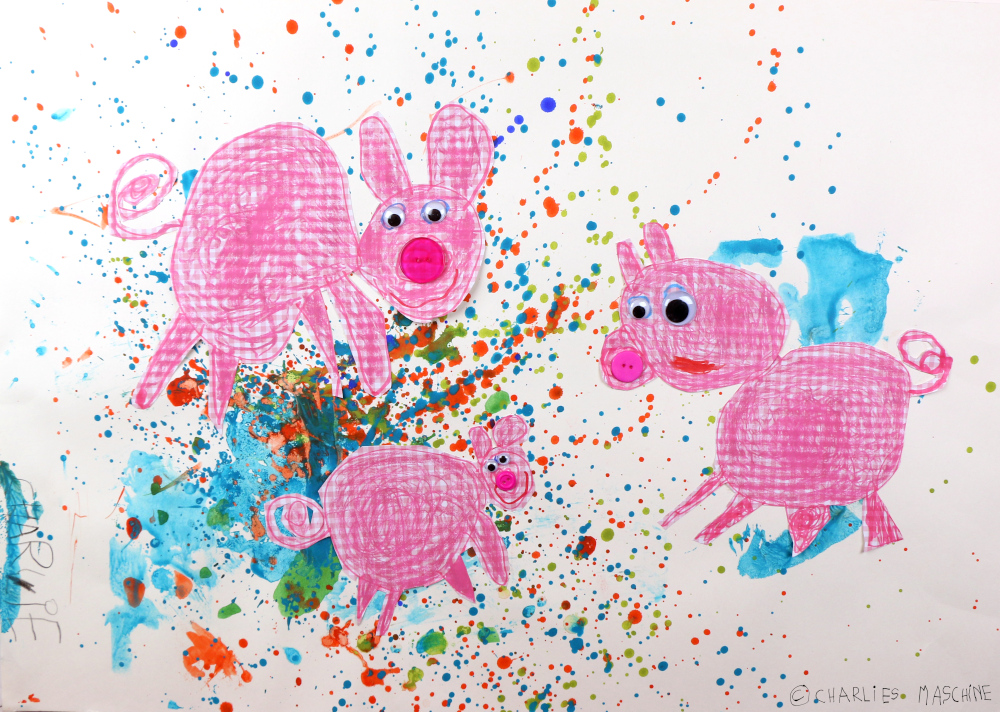
... toothbrush. Charlie dipped his toothbrush into liquid watercolour and with a "swoosh" he splashed paint onto the paper. It became a piggery pigsty.

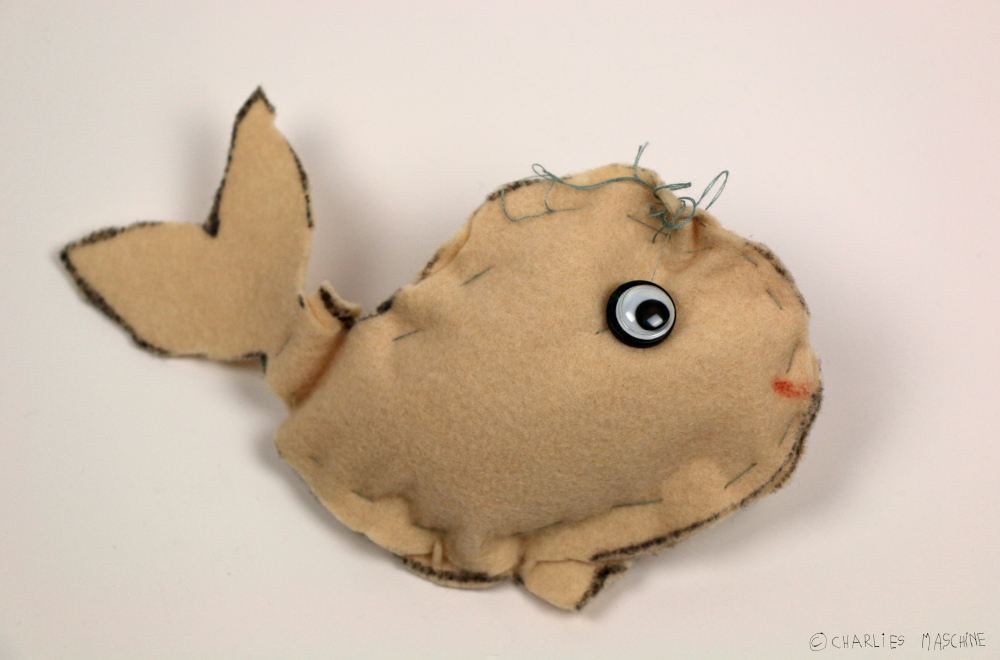
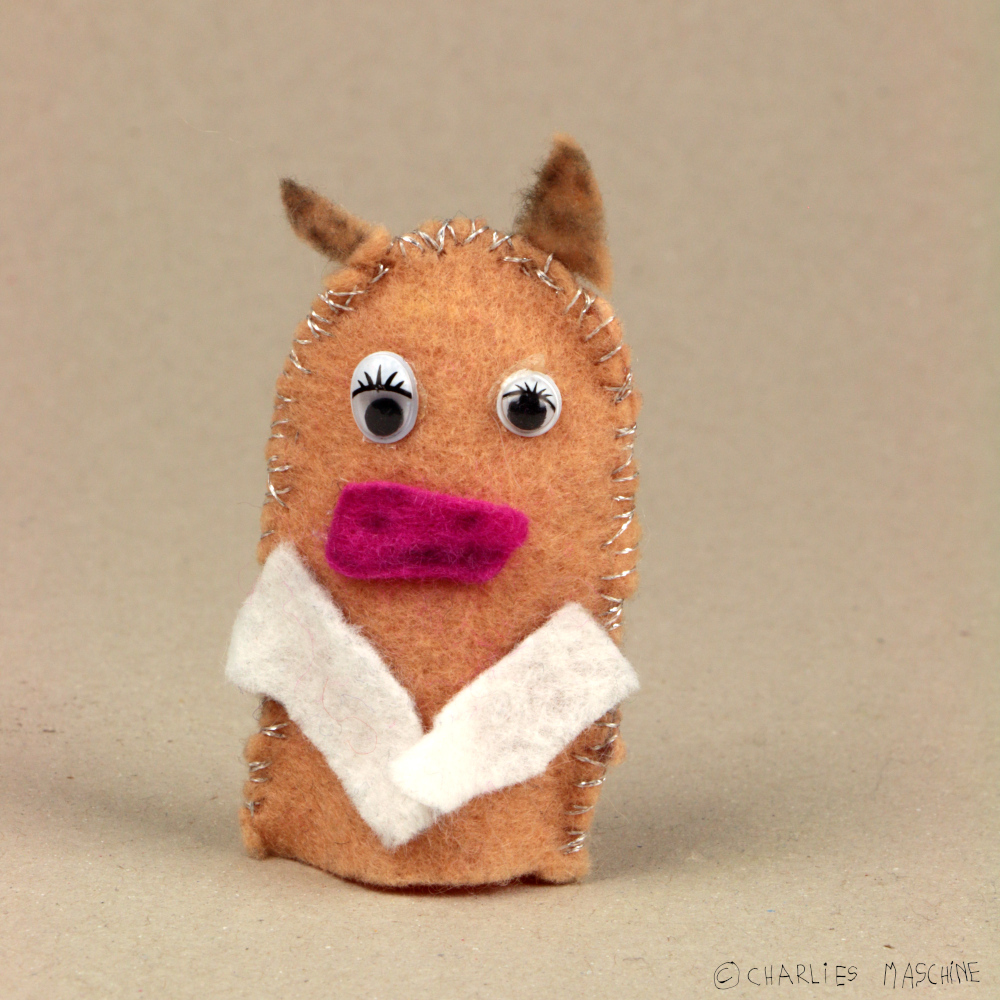
... felt. The fish is stuffed with cotton wool. His googly eye is glued onto a black button. The pig-lady is a finger puppet. She wears white gloves so she doesn‘t get her hands dirty.

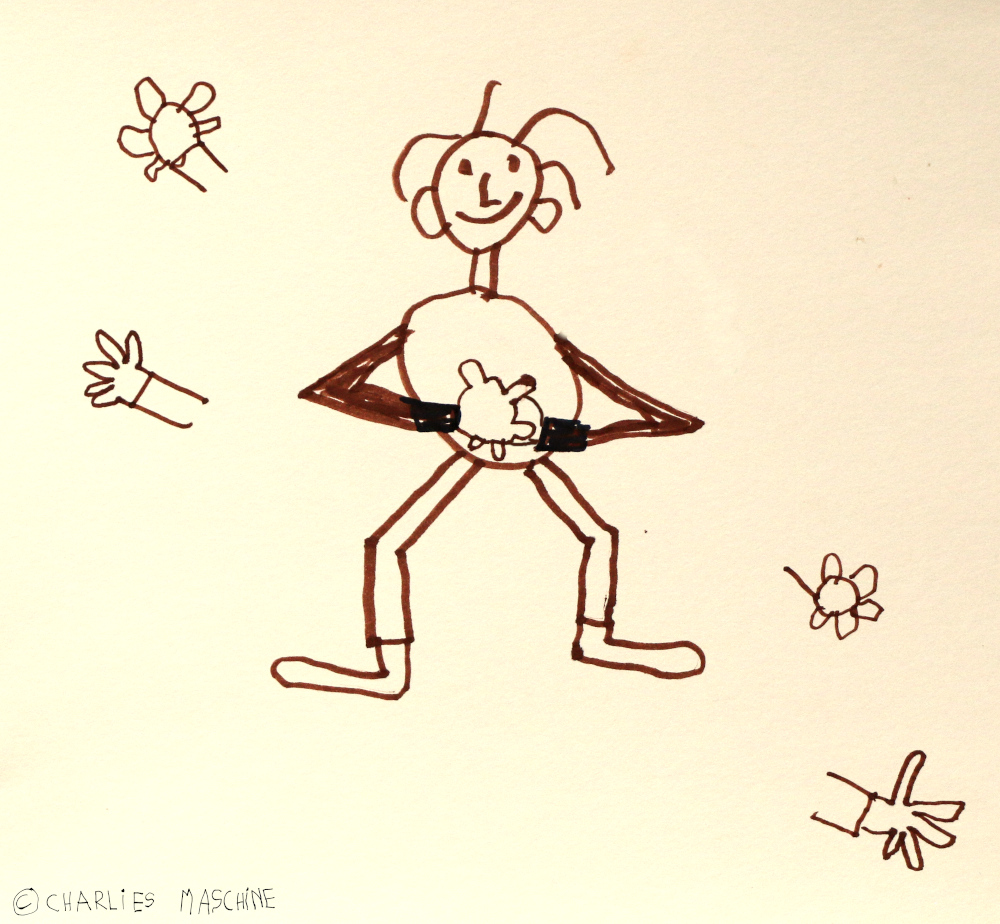
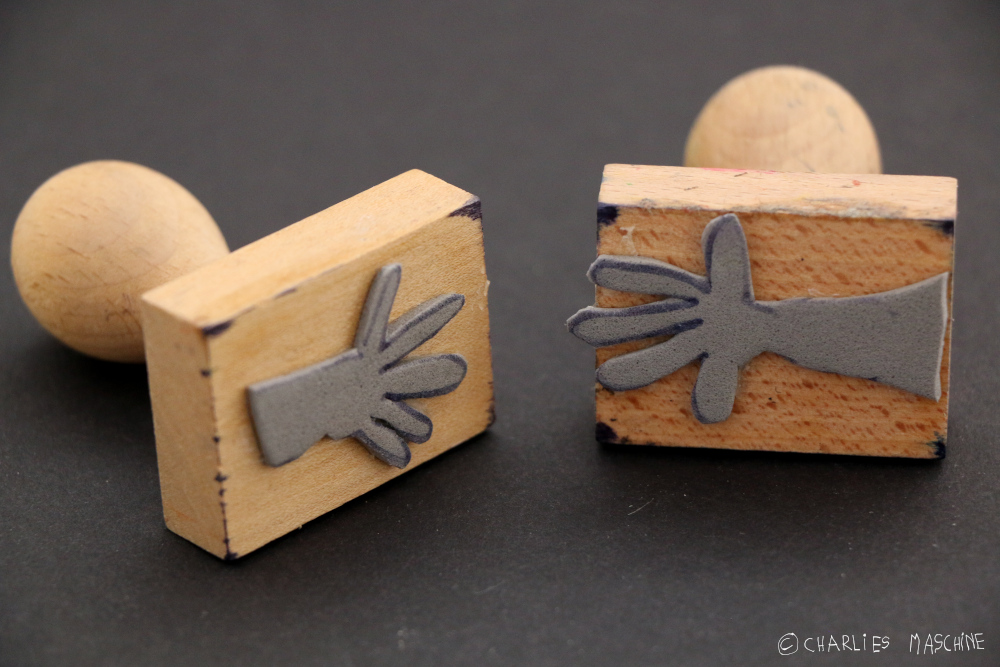
... hands. Thumb, index, middle finger, ring finger, pinkie - isn't it complicated? Charlie simply made stamps from craft foam.

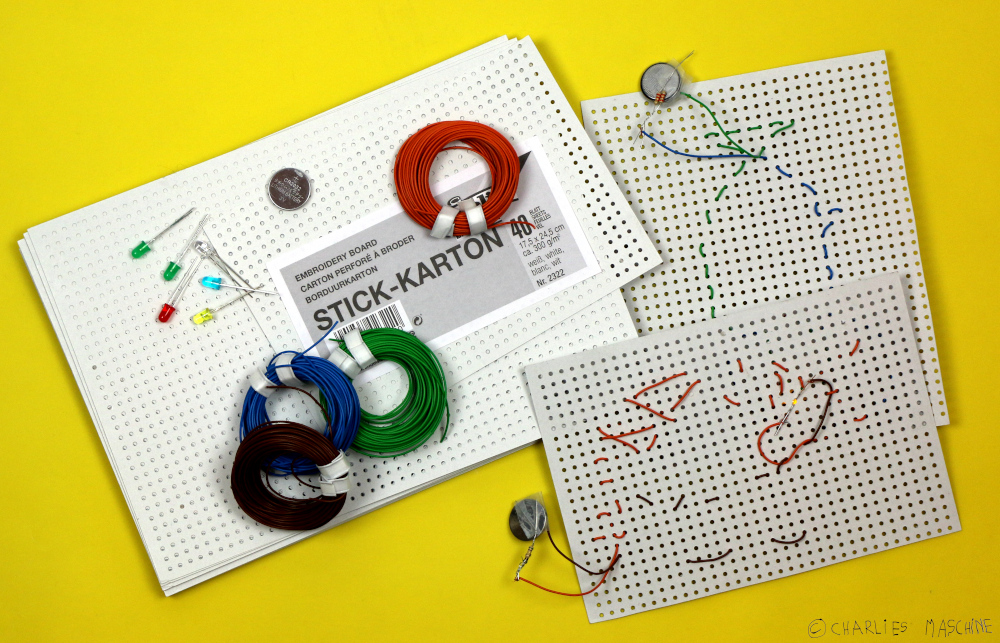
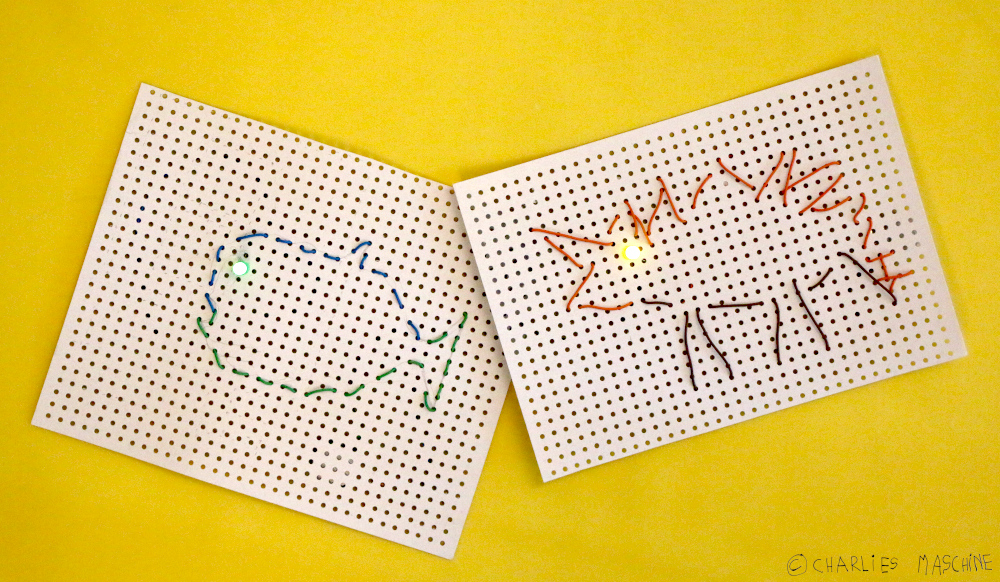
... coloured wires. The orange wire connects the batterie‘s positive pole to the LED‘s long leg, the brown wire leads from the LED‘s short leg back to the batterie‘s negative pole. Green LEDs are too bright, therefore it is better to include a resistor in the circuit.

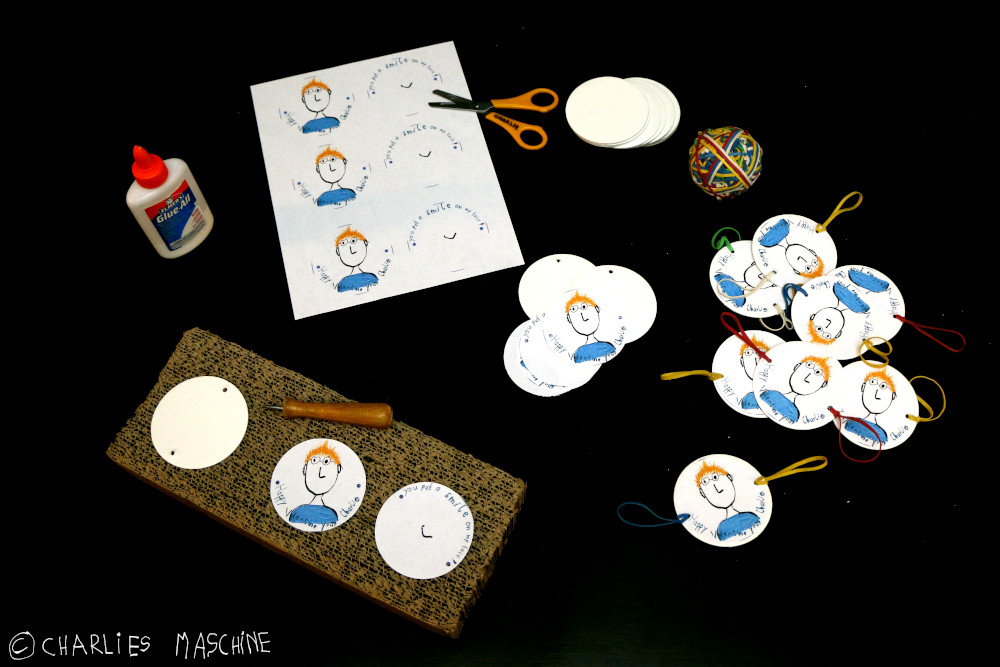
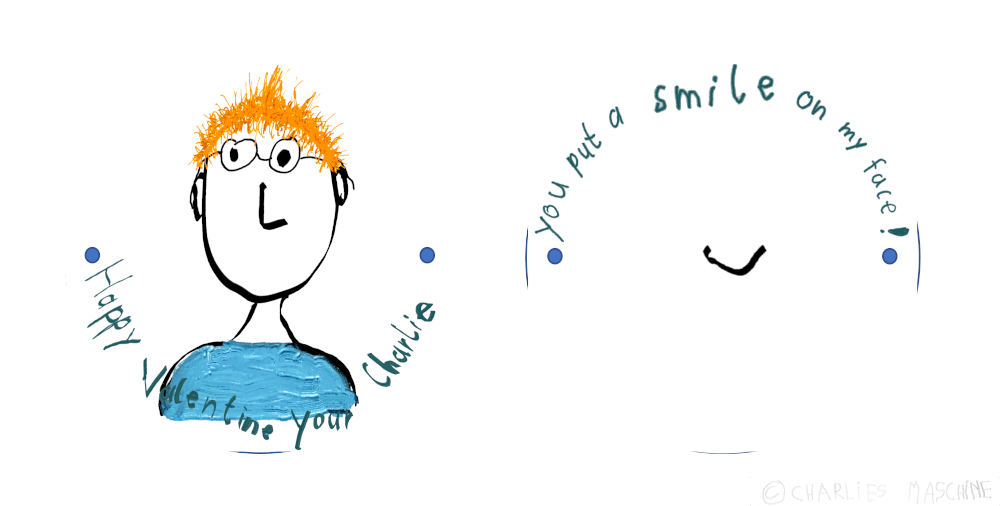
... elastic bands. Charlie made a Valentine thaumatrope – for everyone he likes.

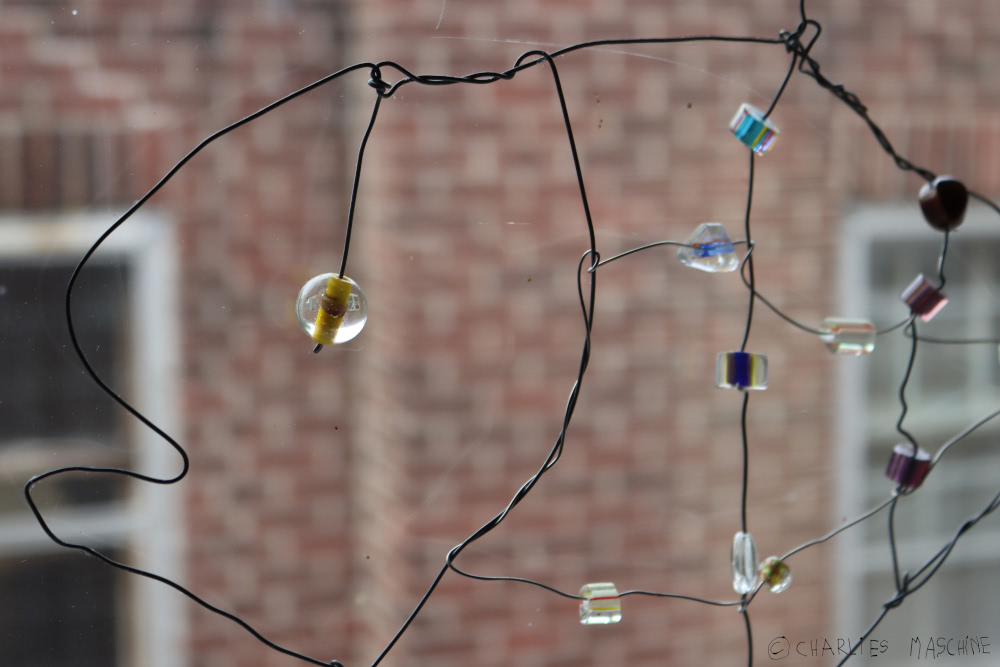

... wire. When you’re getting tired of the view from your window, make a fish. Or an owl? Or what about a five-eyed monster?

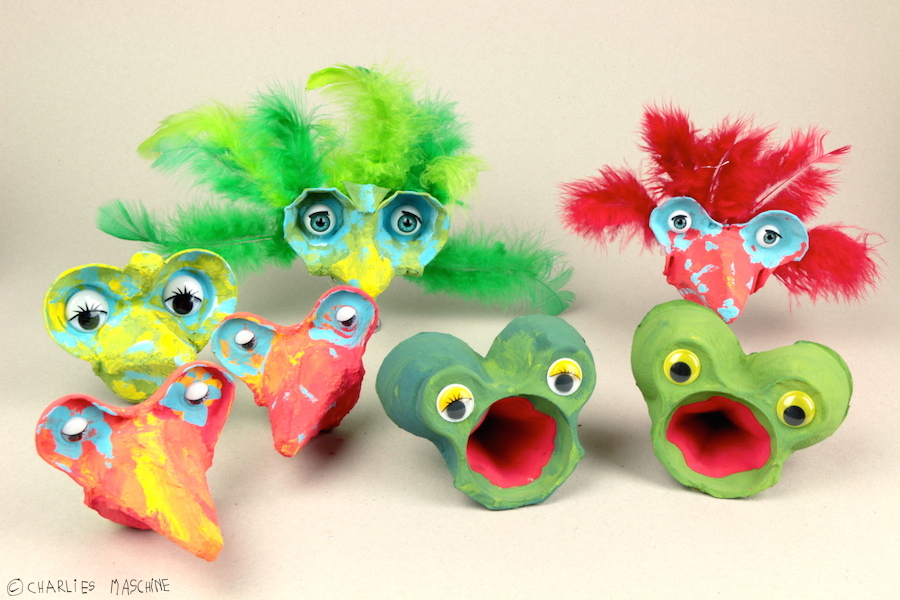

... 10 eggs. In a cardboard box of eggs you'll find the odd bird and sometimes even a frog!

... a screen saver. Charlie chose a nice one as background for his flight simulator. Watch the gameplay in the video.

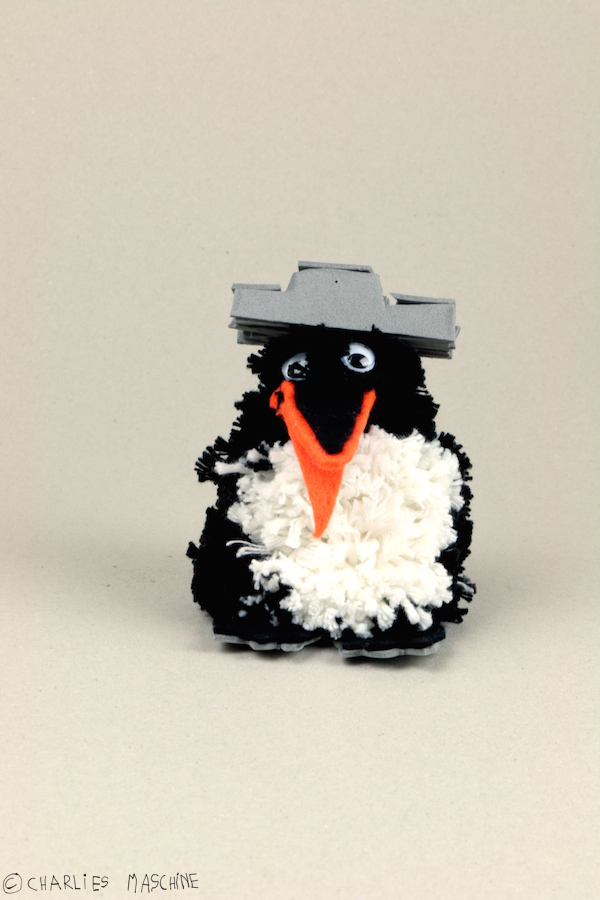
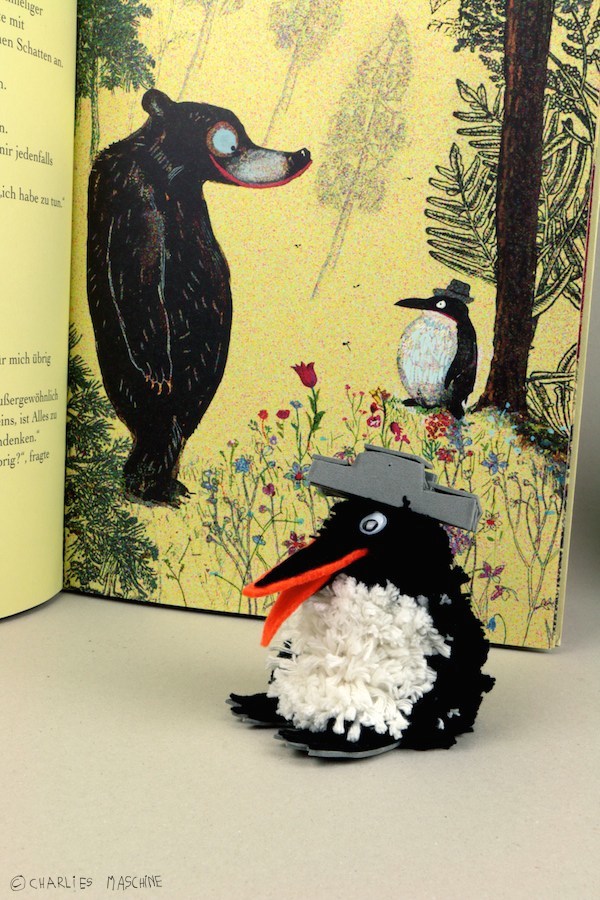
... pompon-maker. The plan was to make a majestic emperor penguin. But it turned out to be the Penultimate Penguin!
The original Penultimate Penguin was invented by Oren Lavie, illustrated by Wolf Erlbruch
(and Harry Rowohlt translated the original English manuscript into German):
"The Bear Who Wasn't There: And The Fabulous Forest", Publisher: Black Sheep.

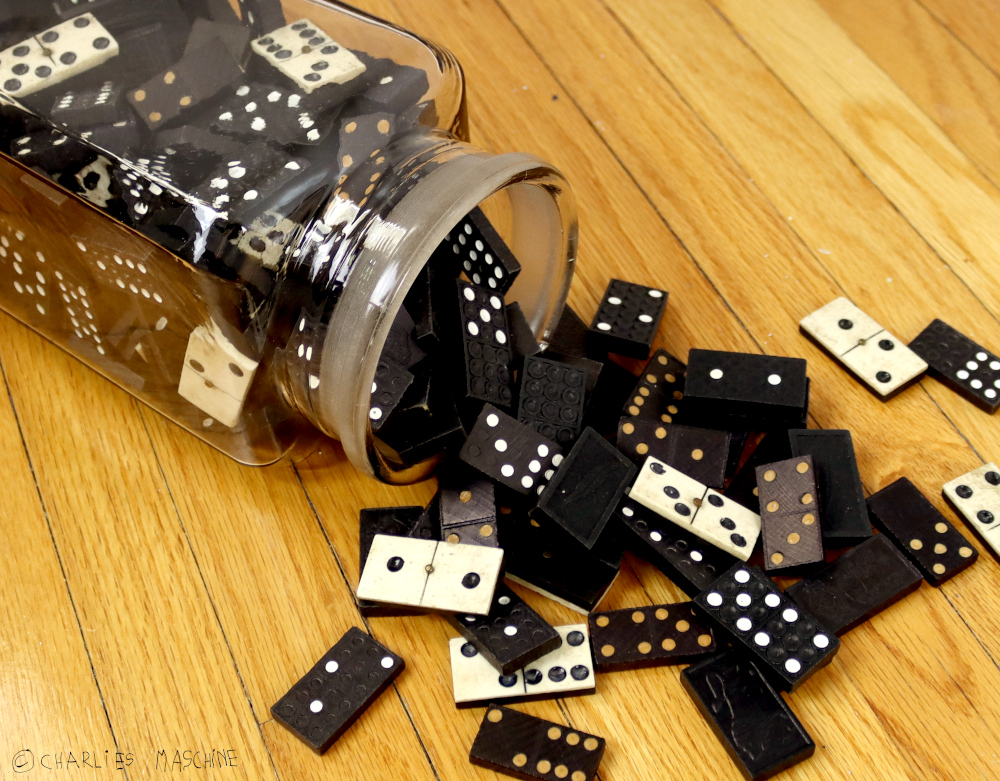
... dominos. Can you write your name in one single line? Sometimes, letters need to be connected using a bit of a trick. Now give yourself a push!


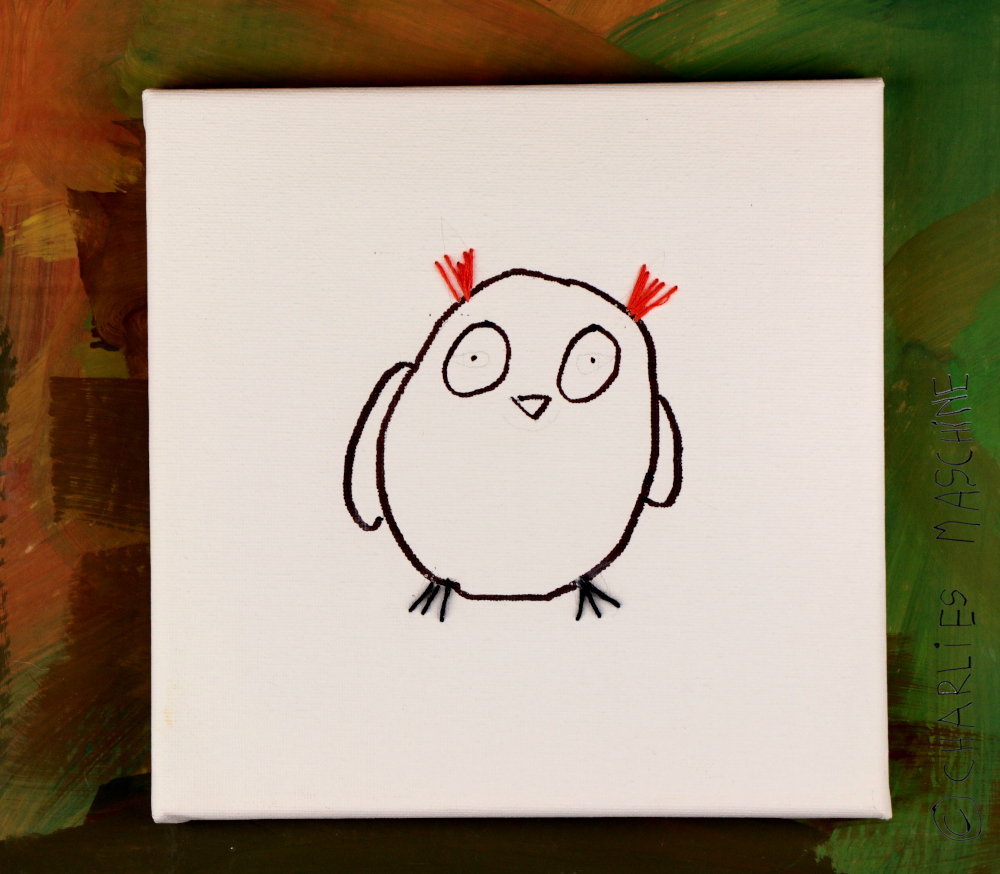
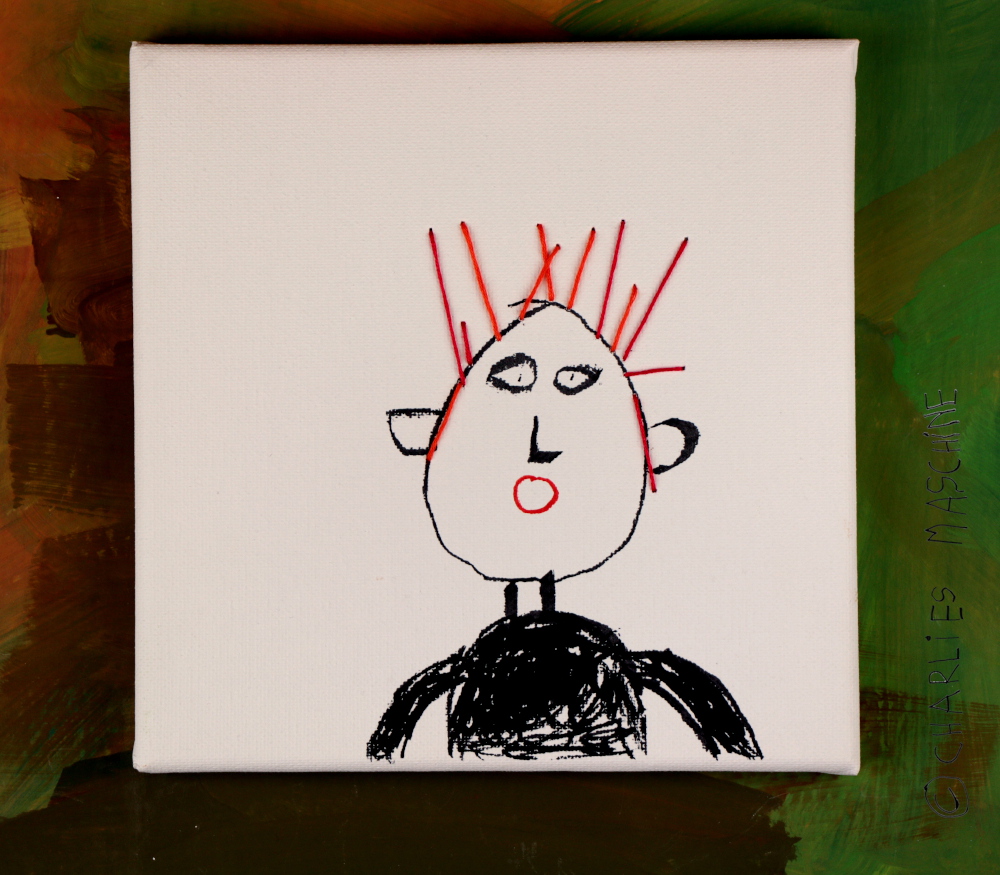
... small canvases. With thick markers and yarn, for example, you can make an art wall - piece by piece.
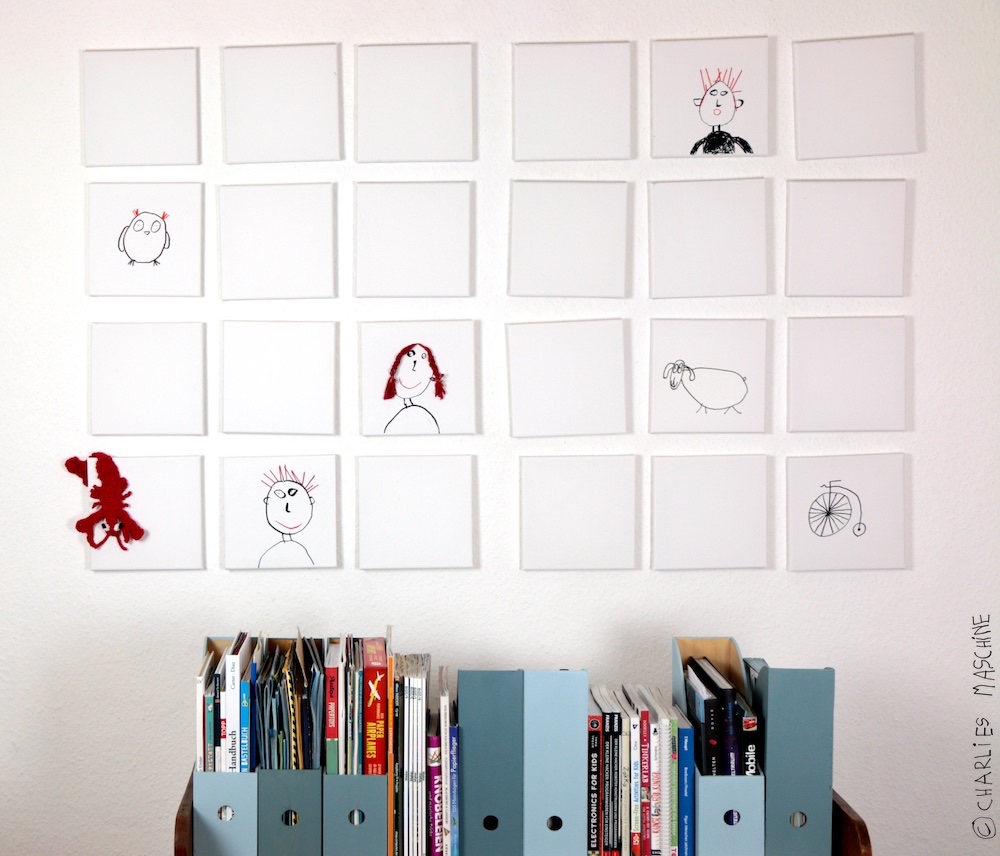

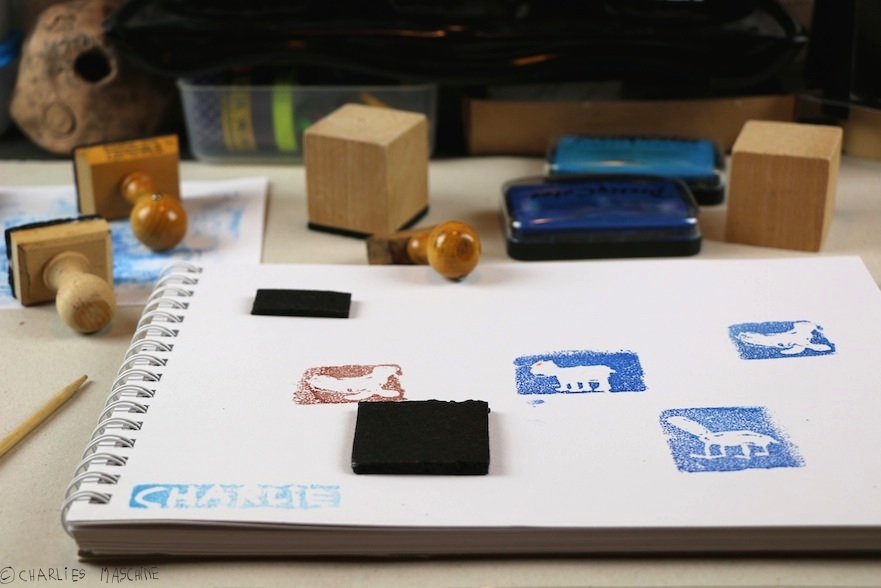
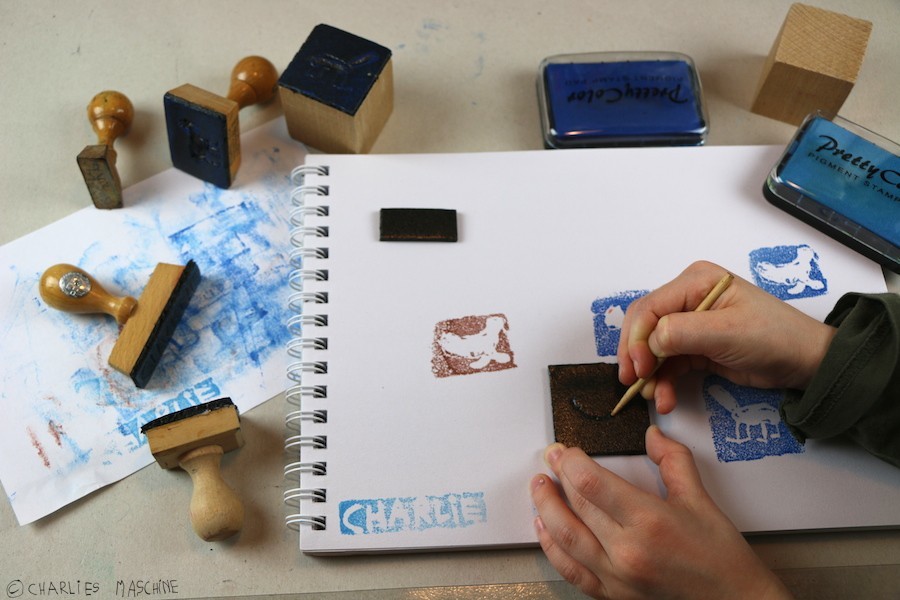
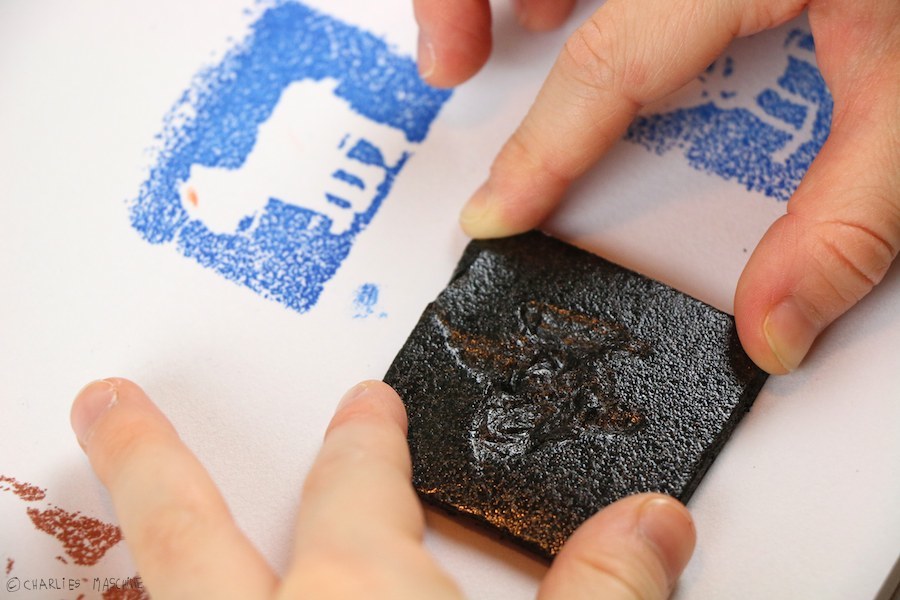
... sweet peas. They are often packed on small styrofoam plates. You can easily carve those to make your own stamps.

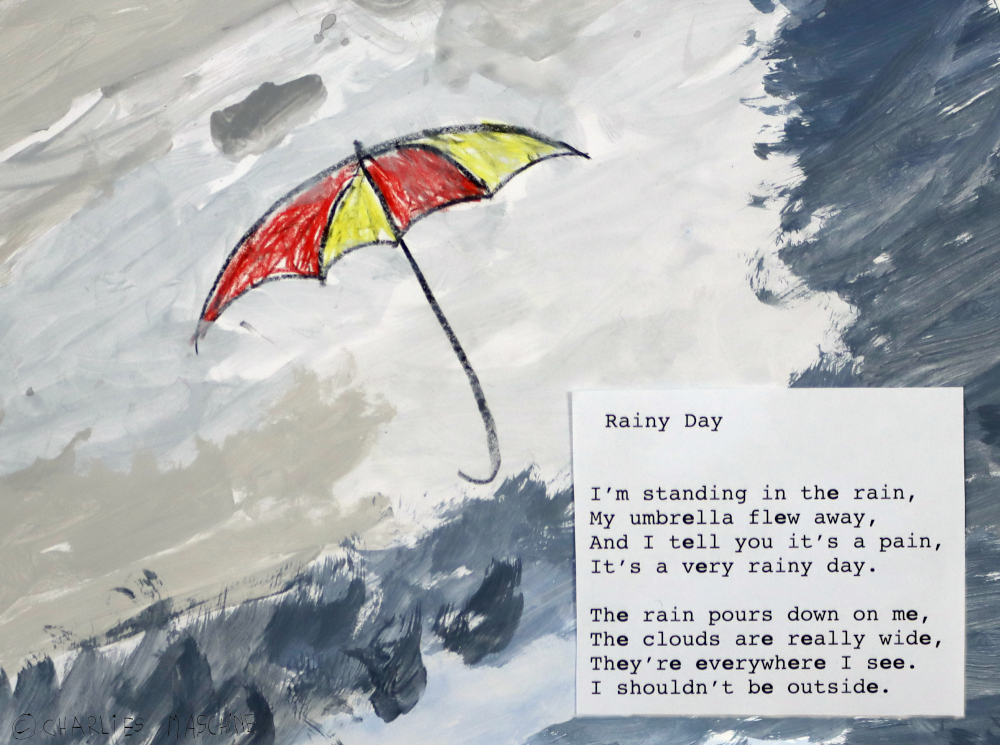

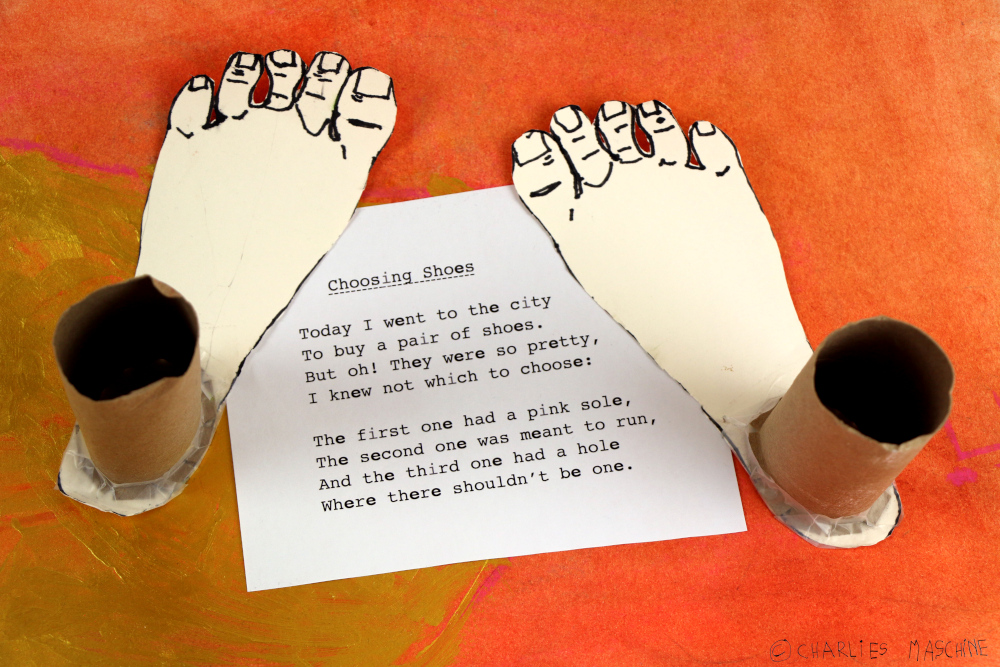




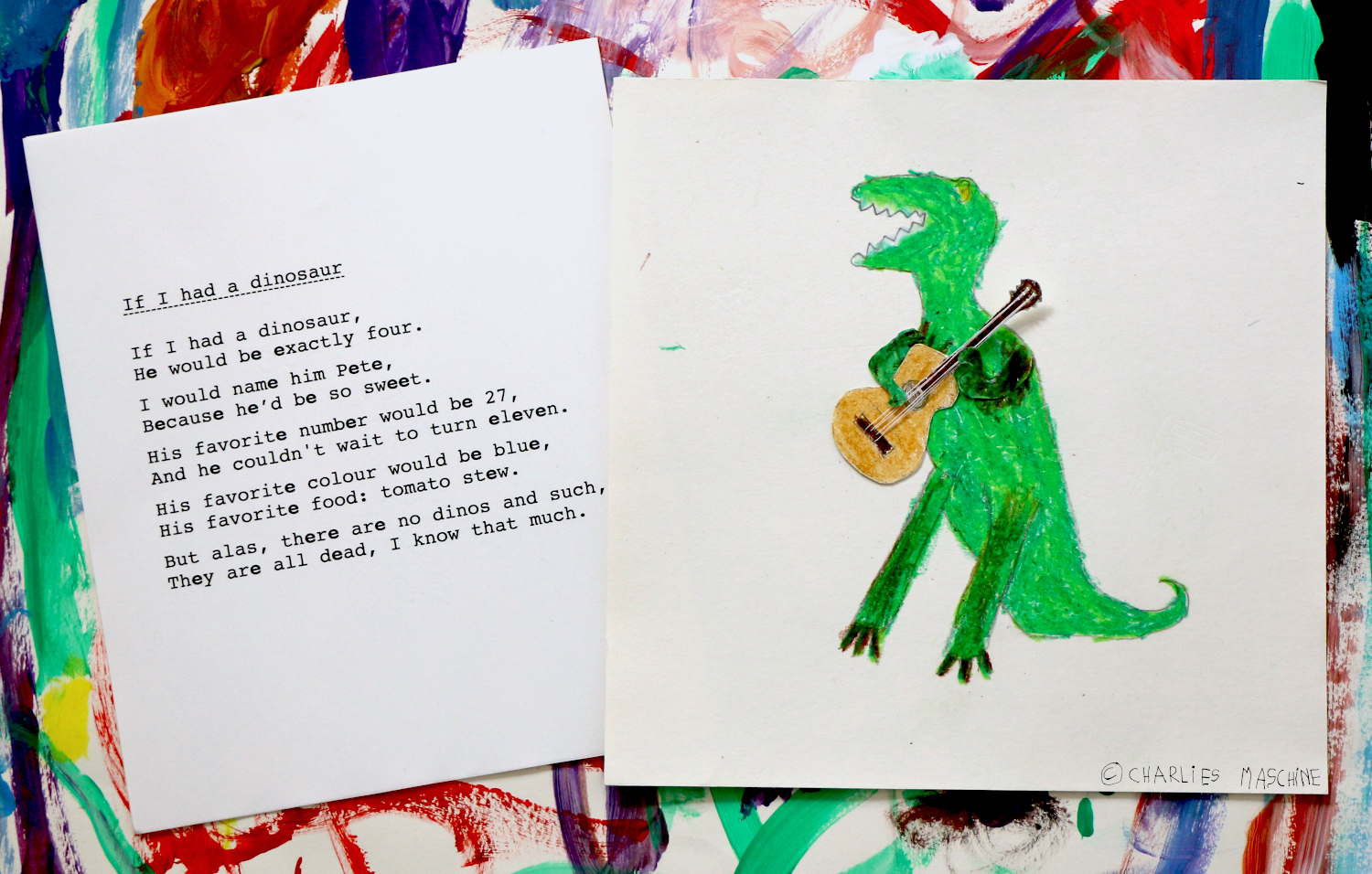

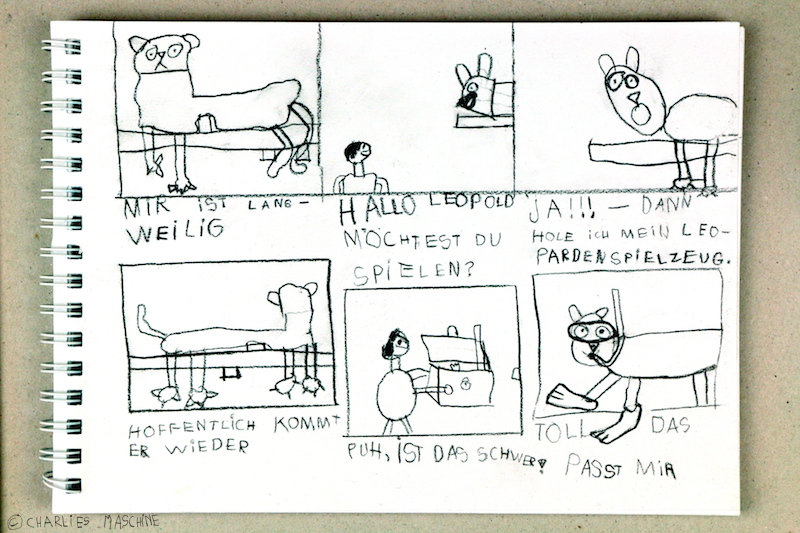

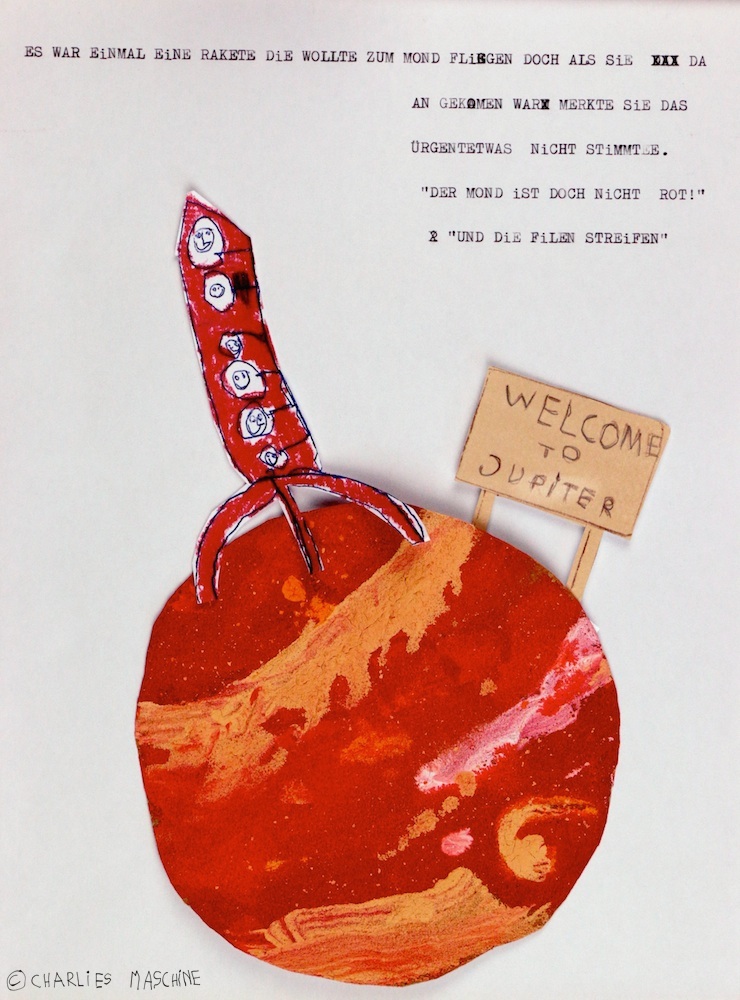

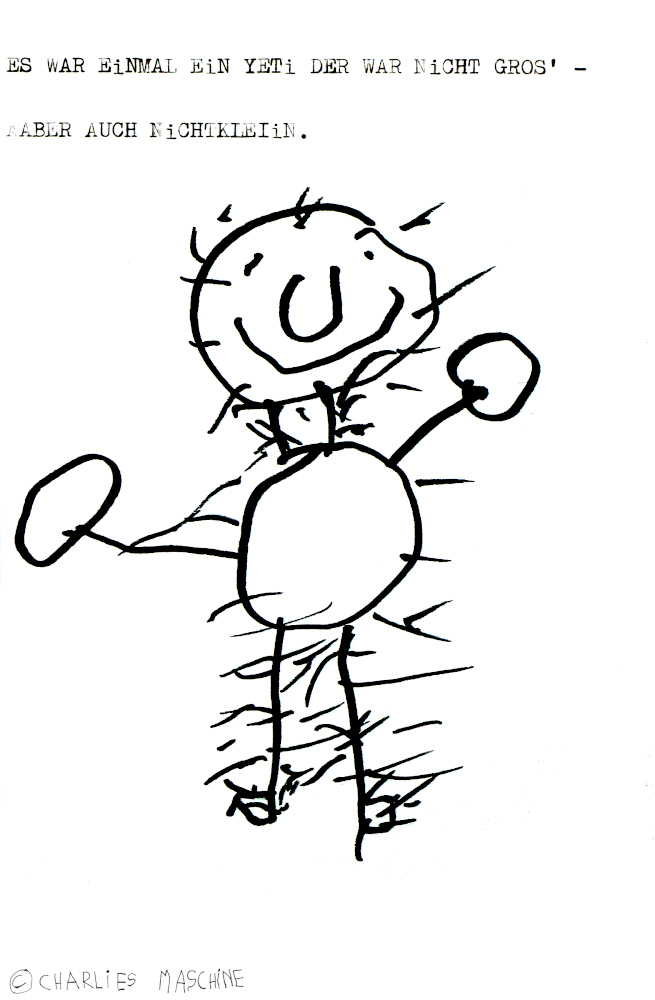

Clack-clack-clack-bing! Since the age of 4, Charlie loves his typewriter, model „Progress“ – knowing this helps to understand Charlie's very first story.
